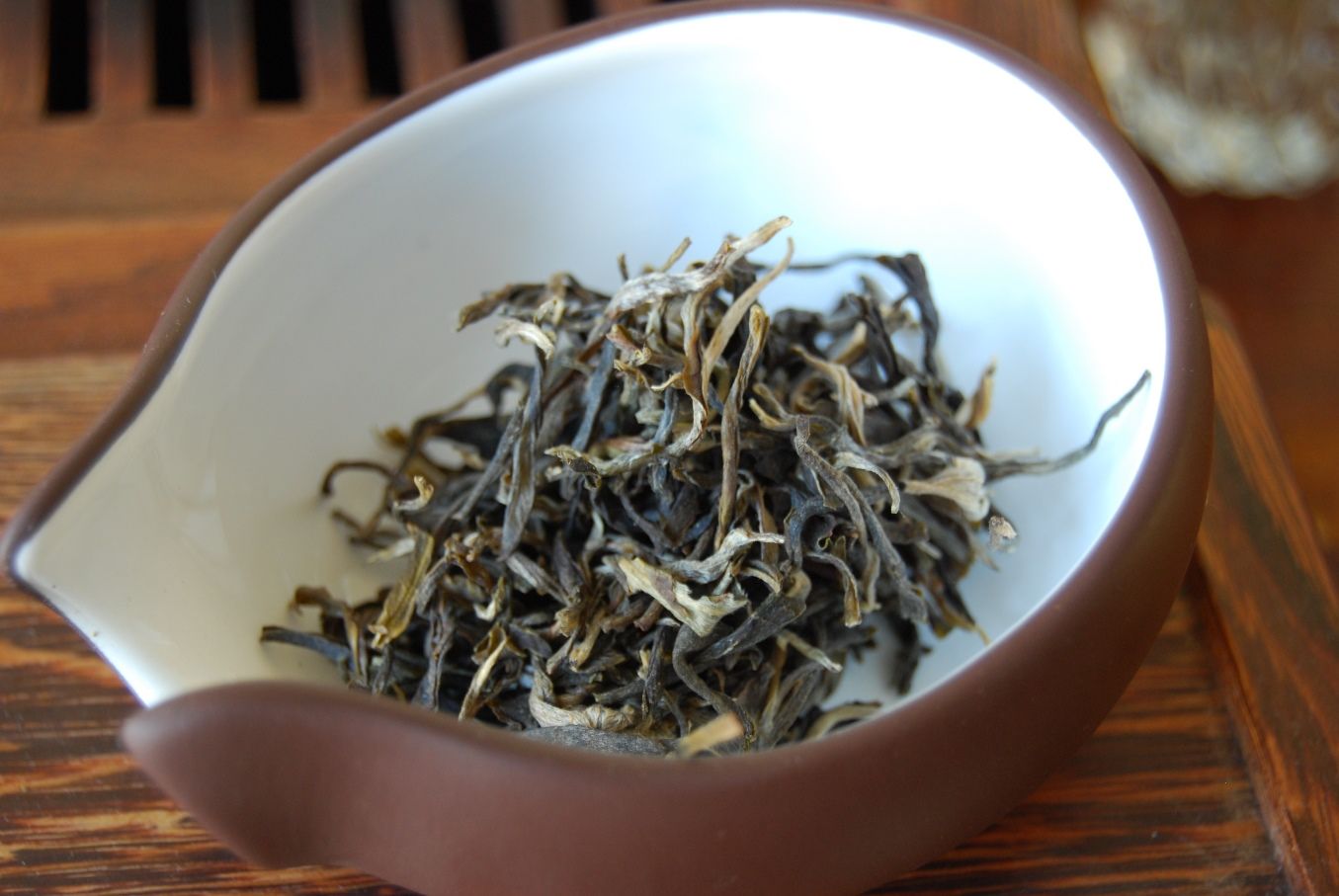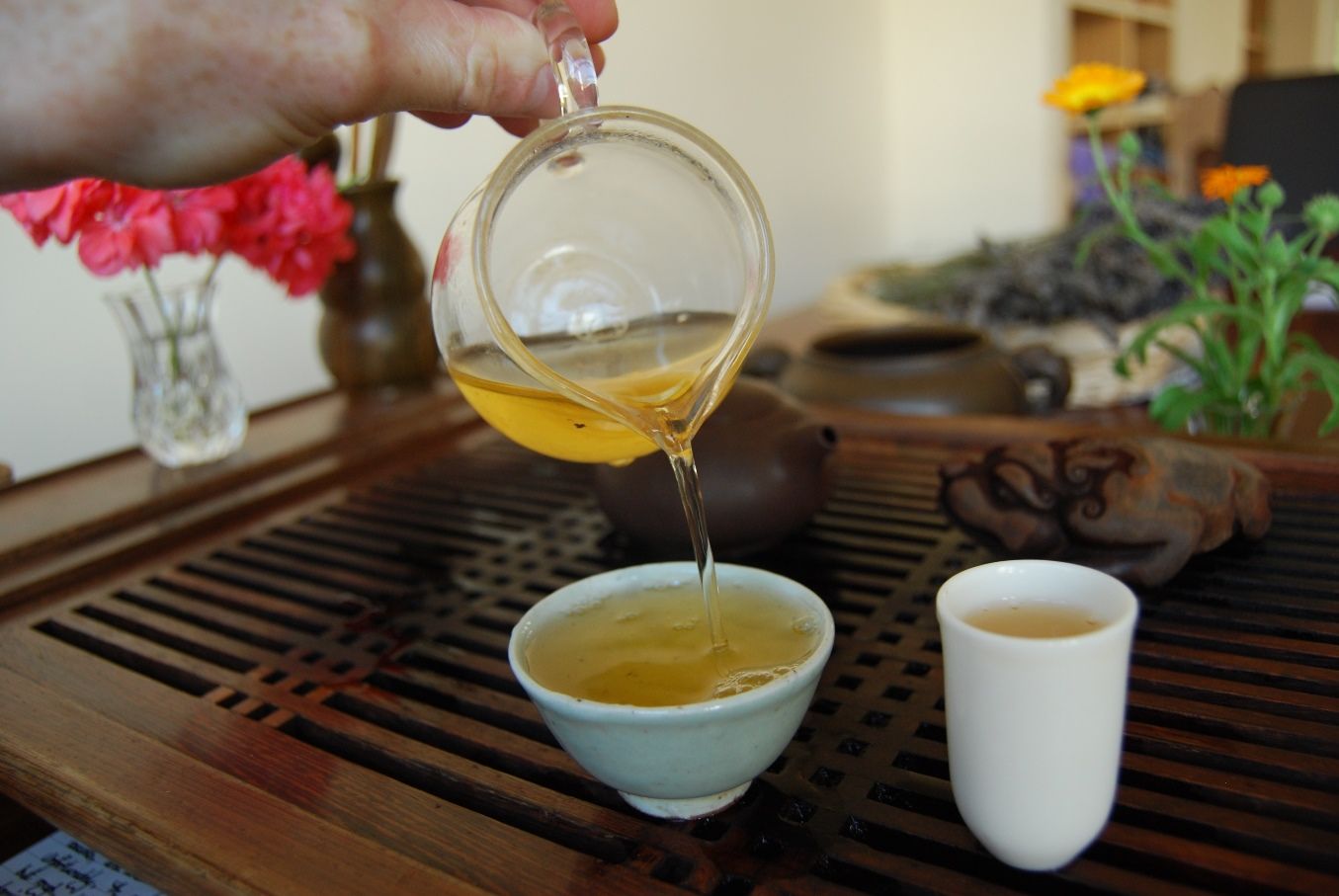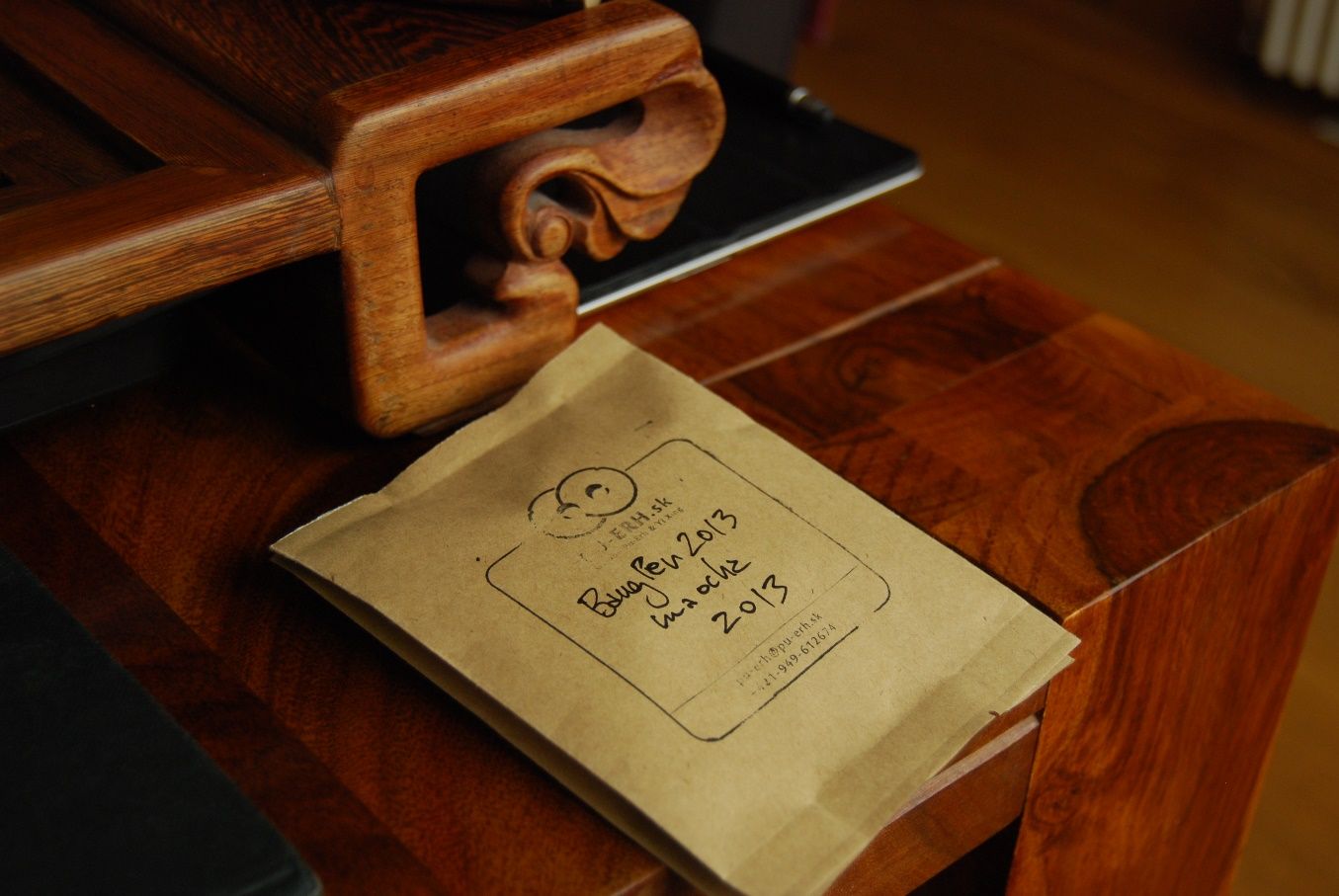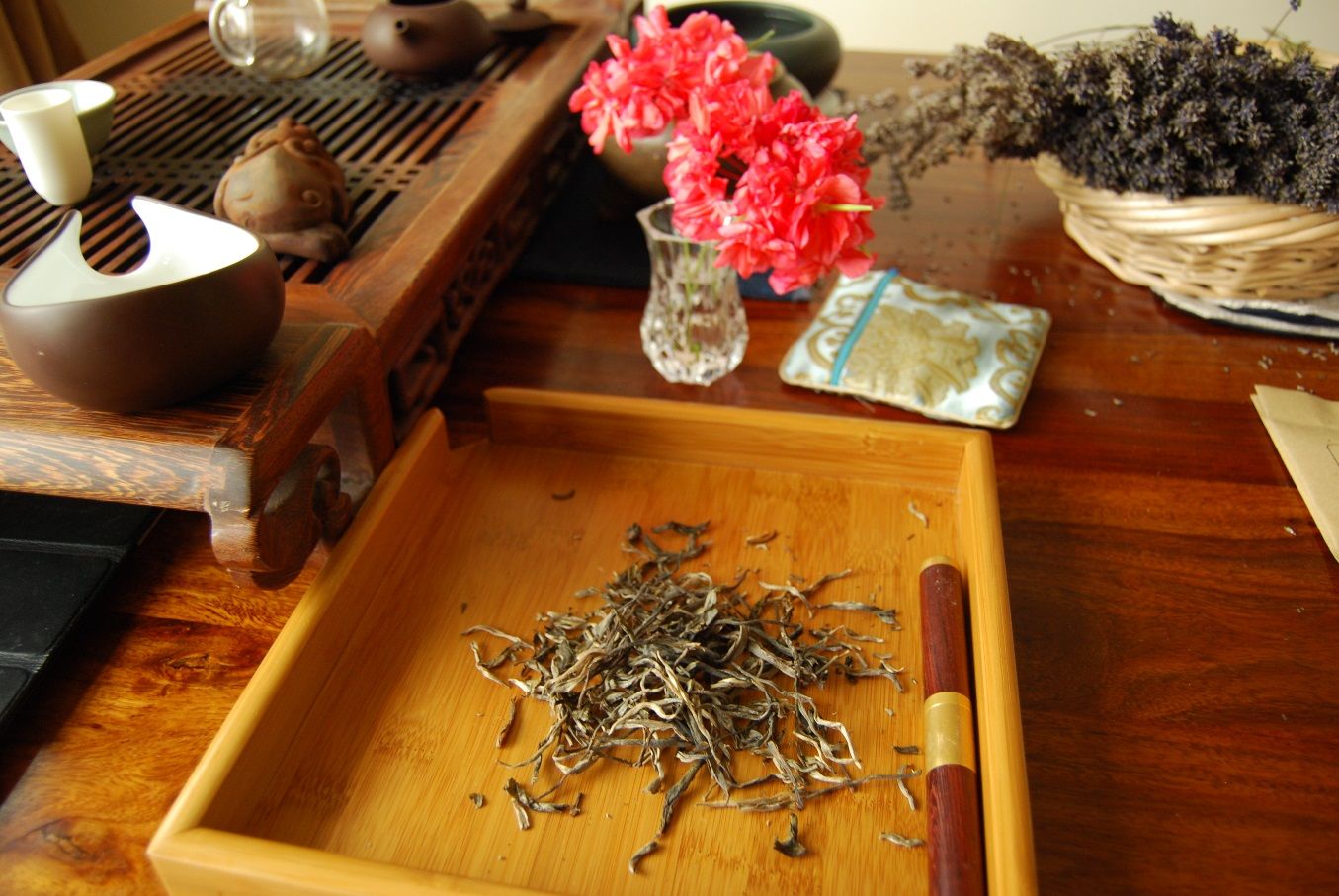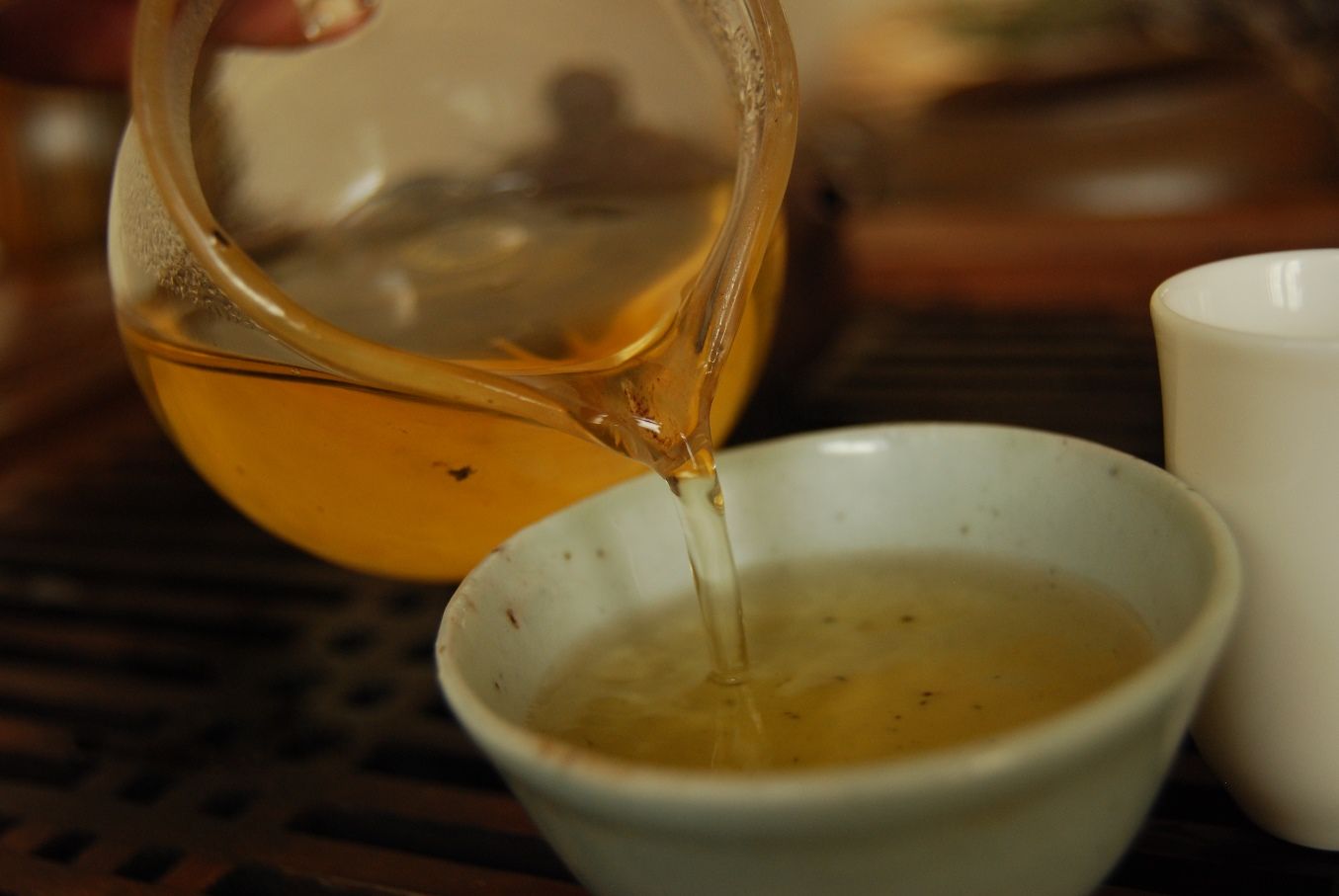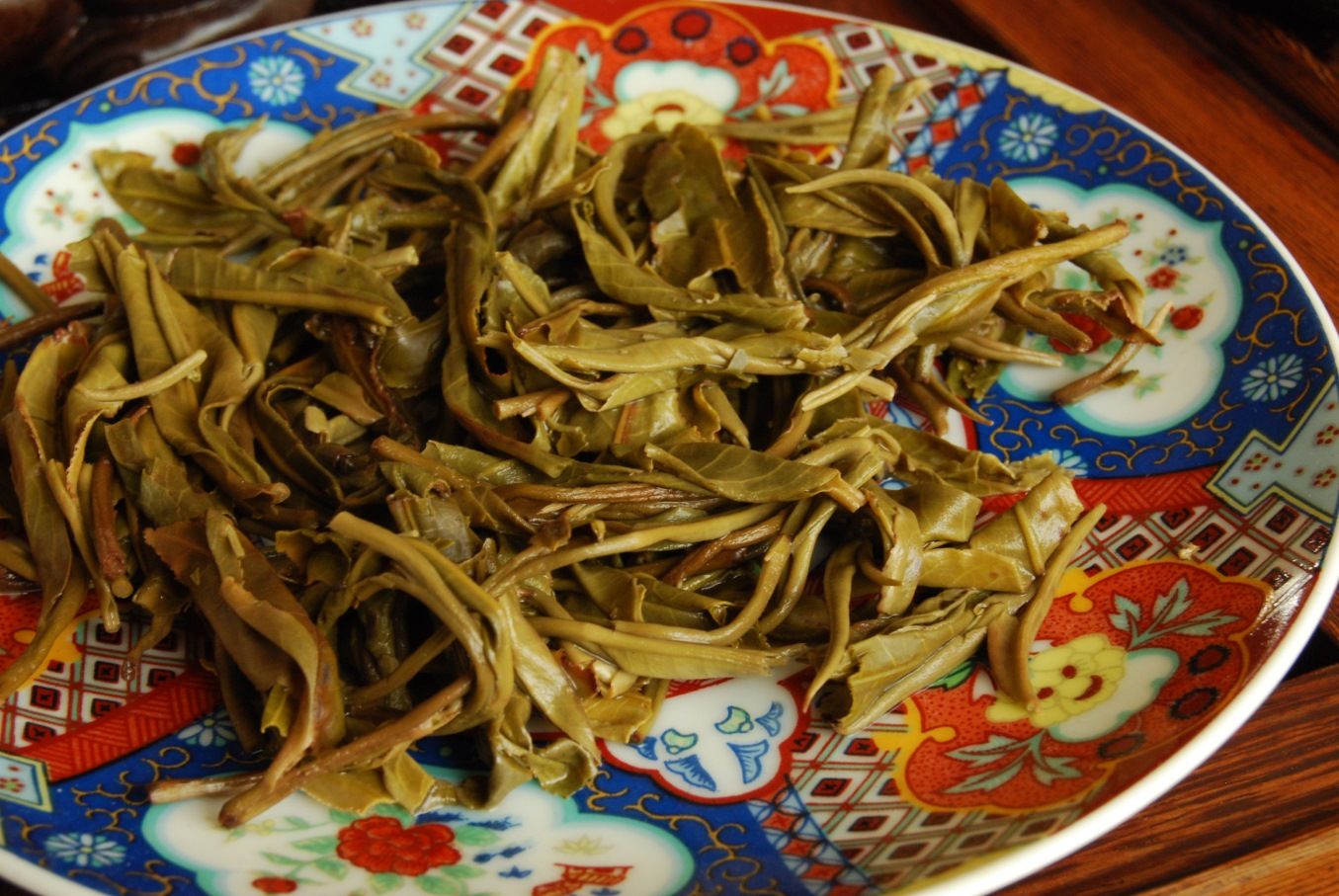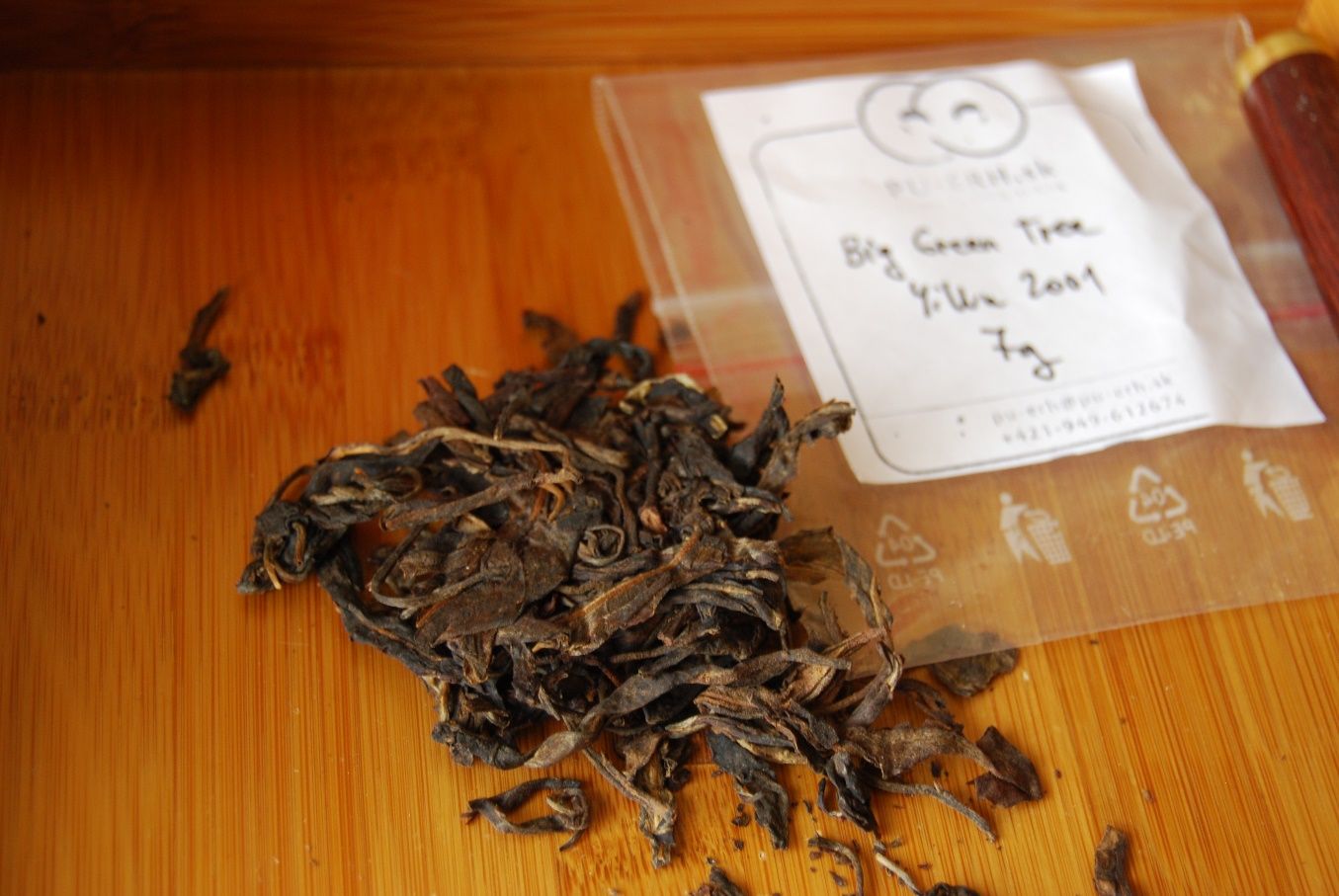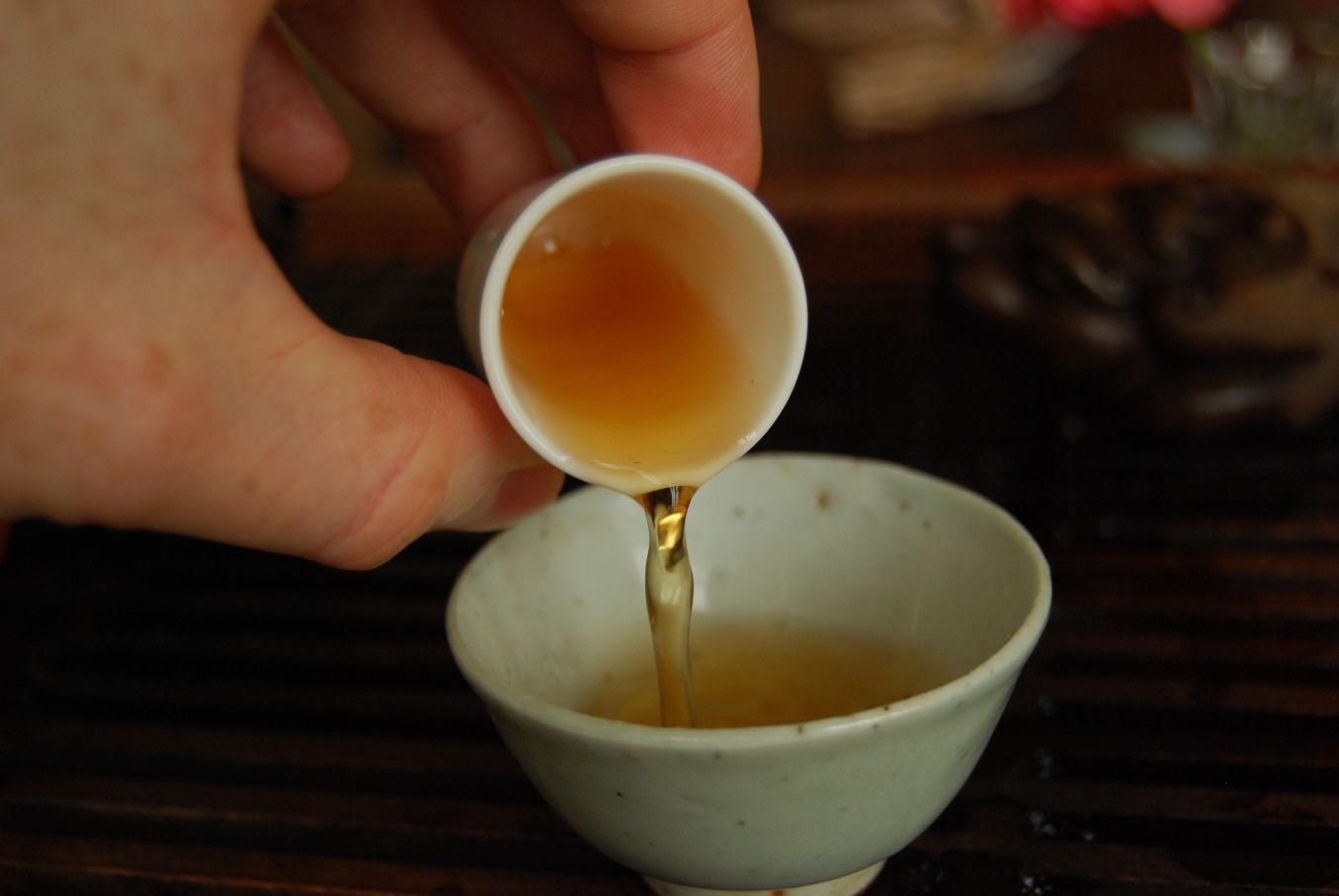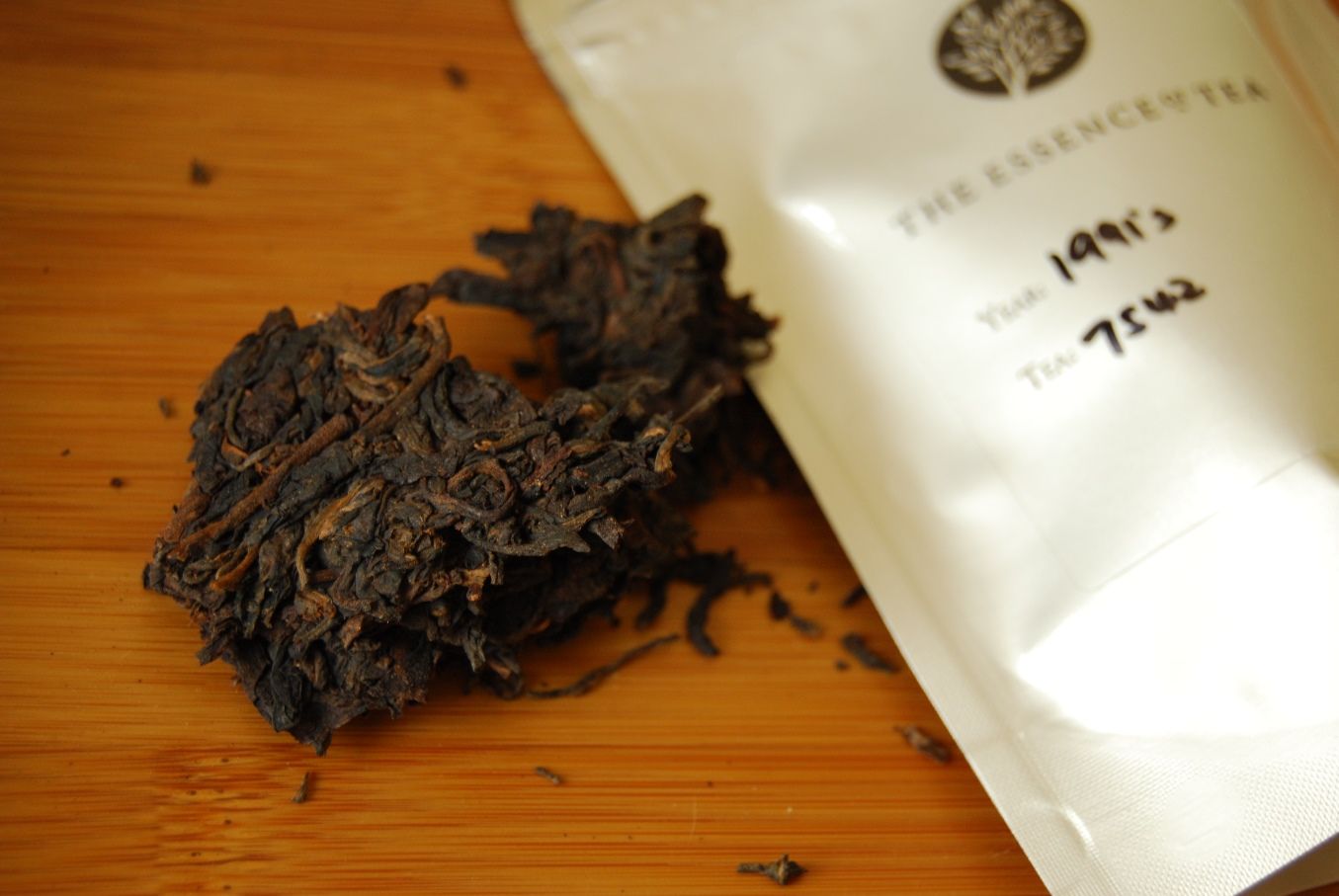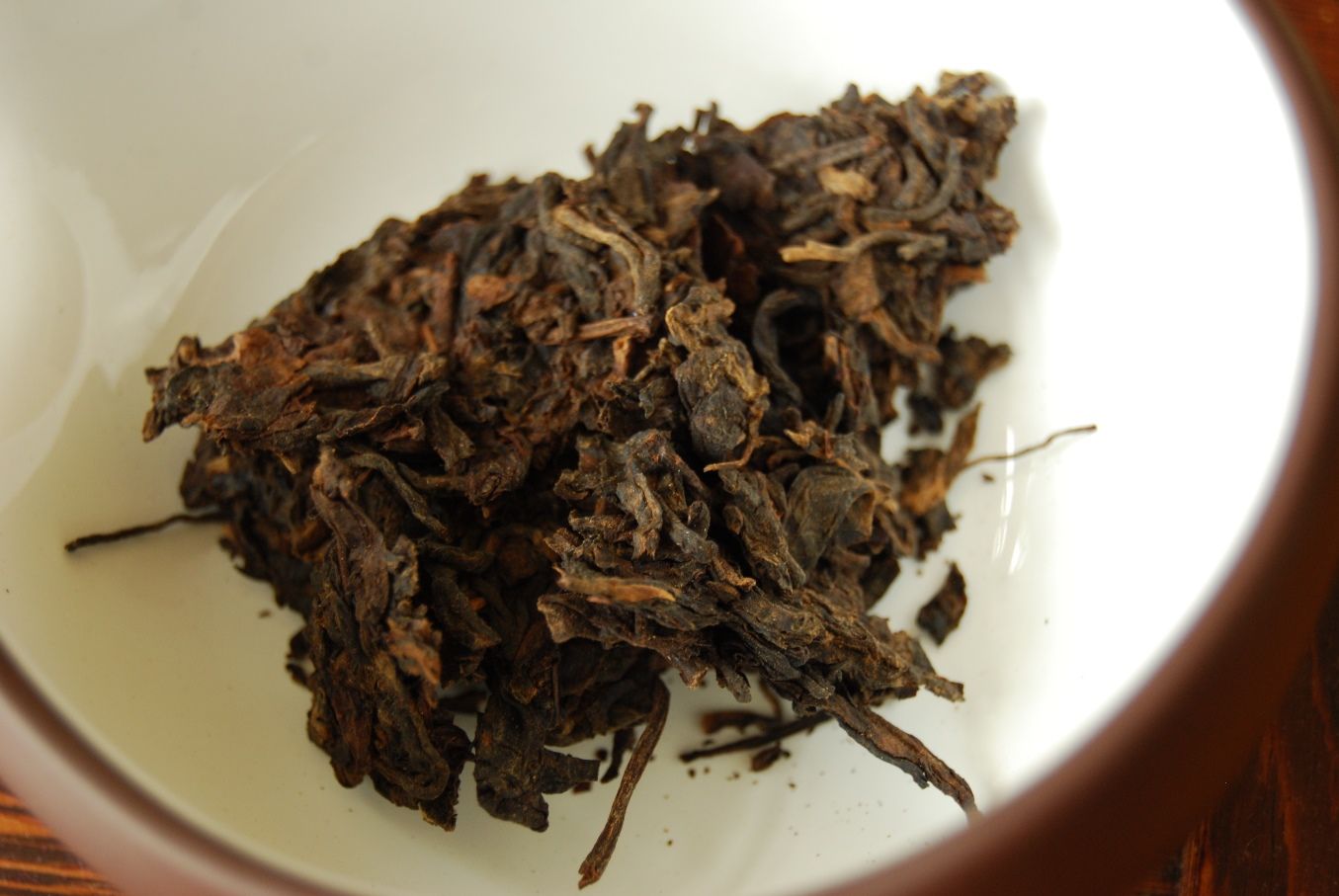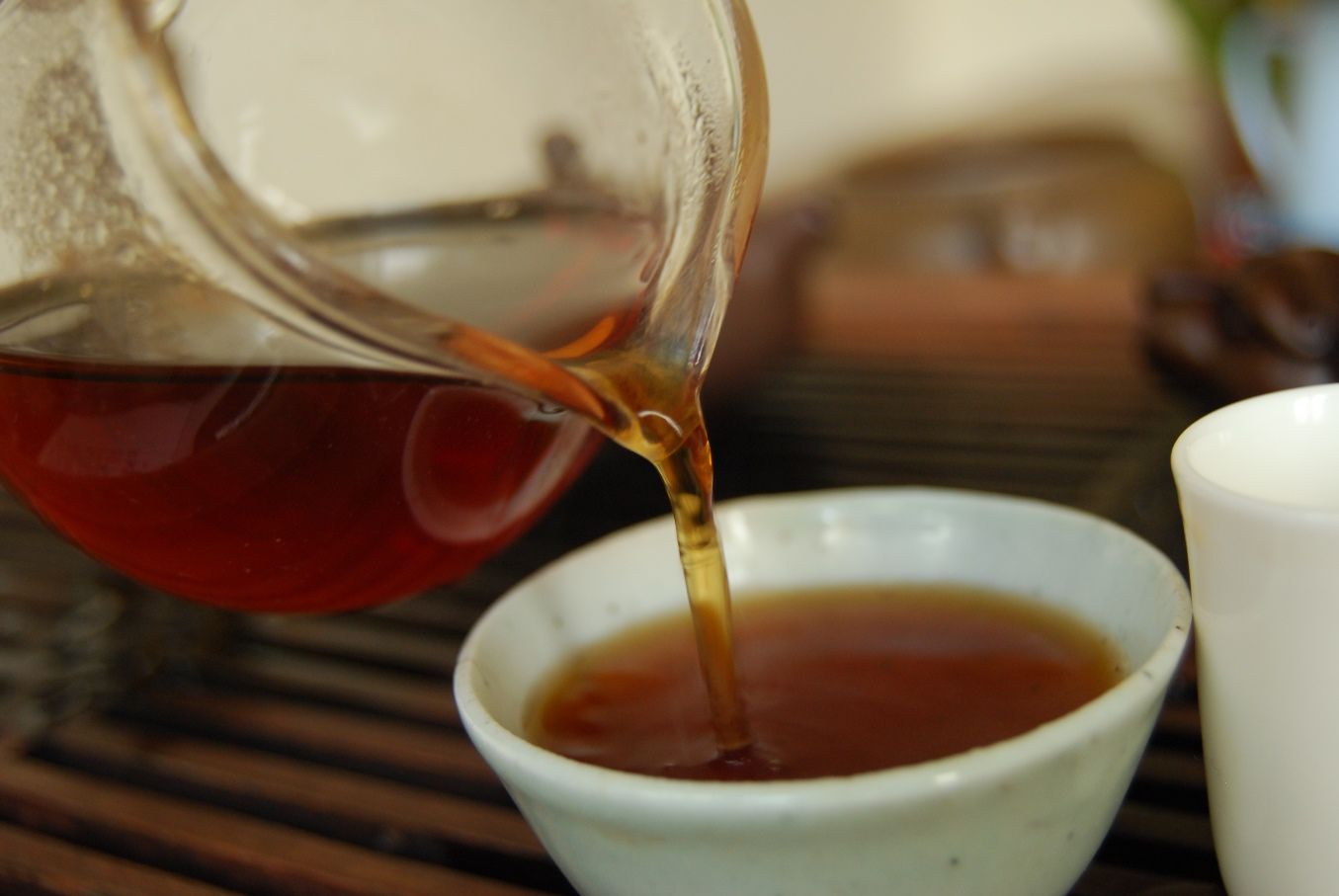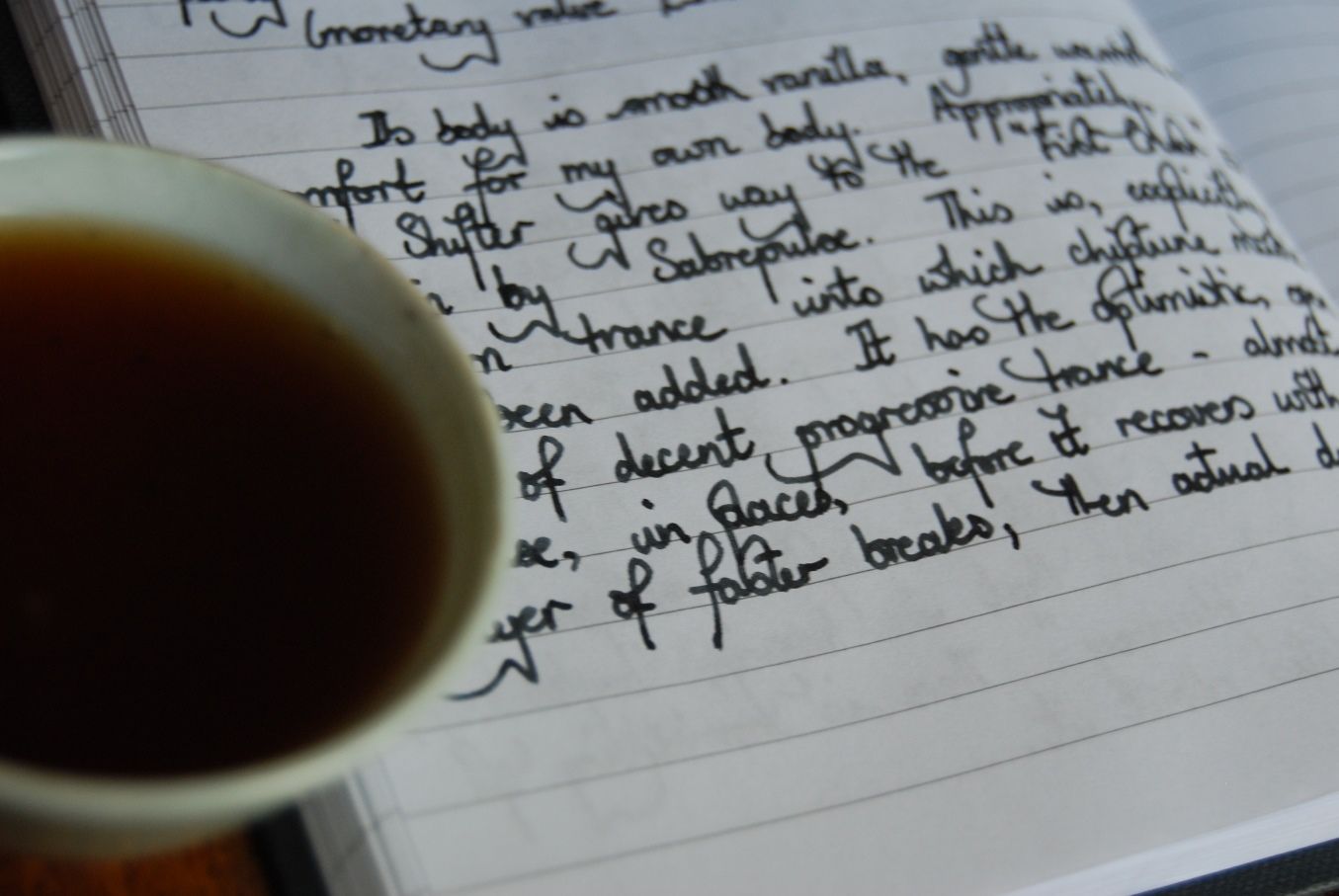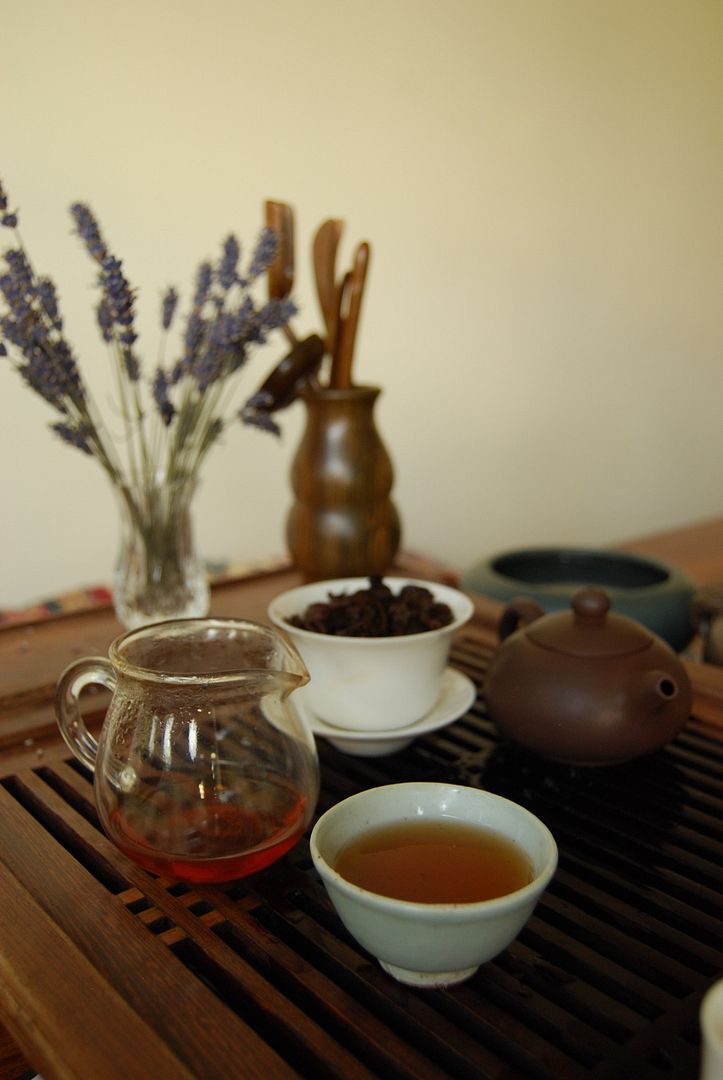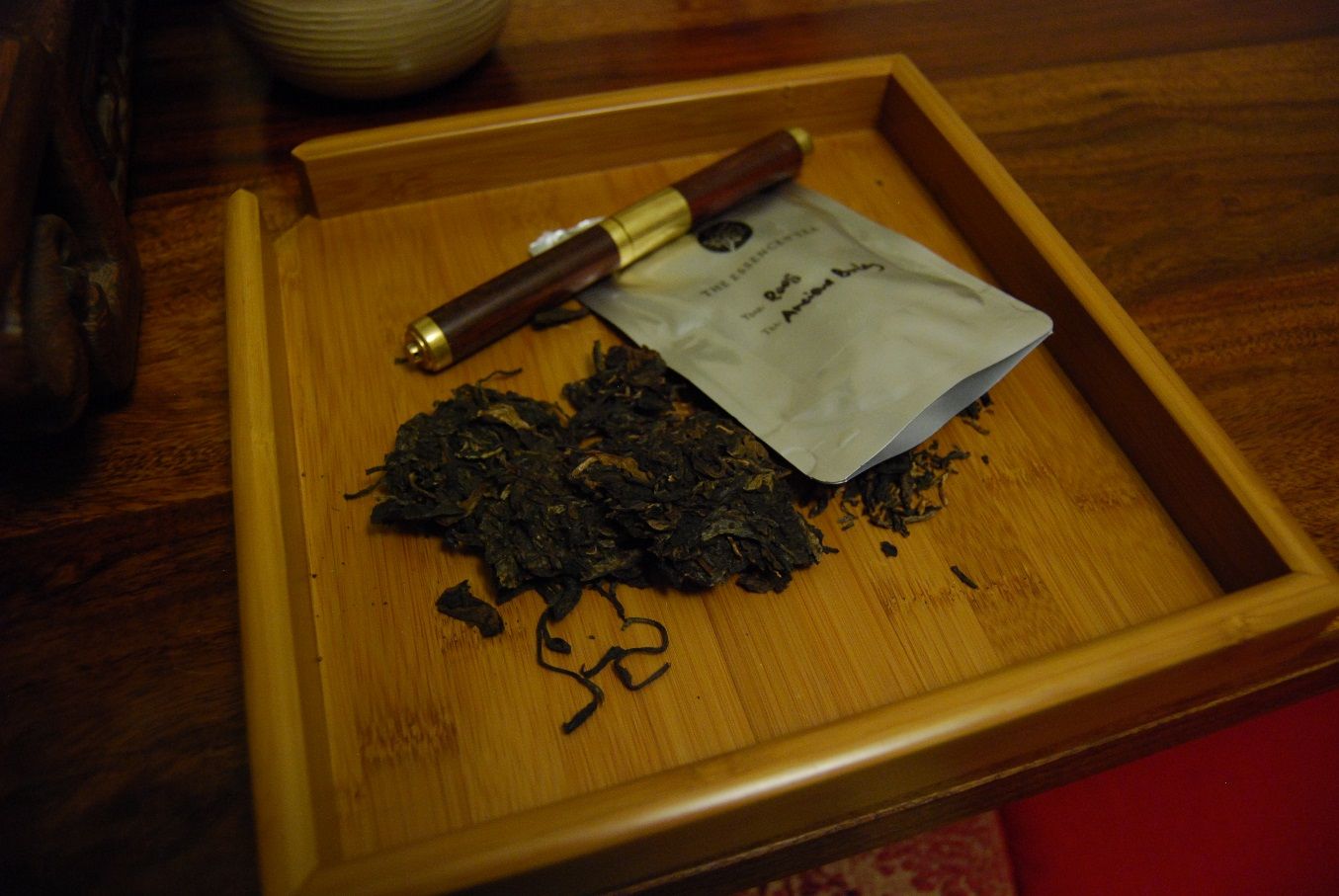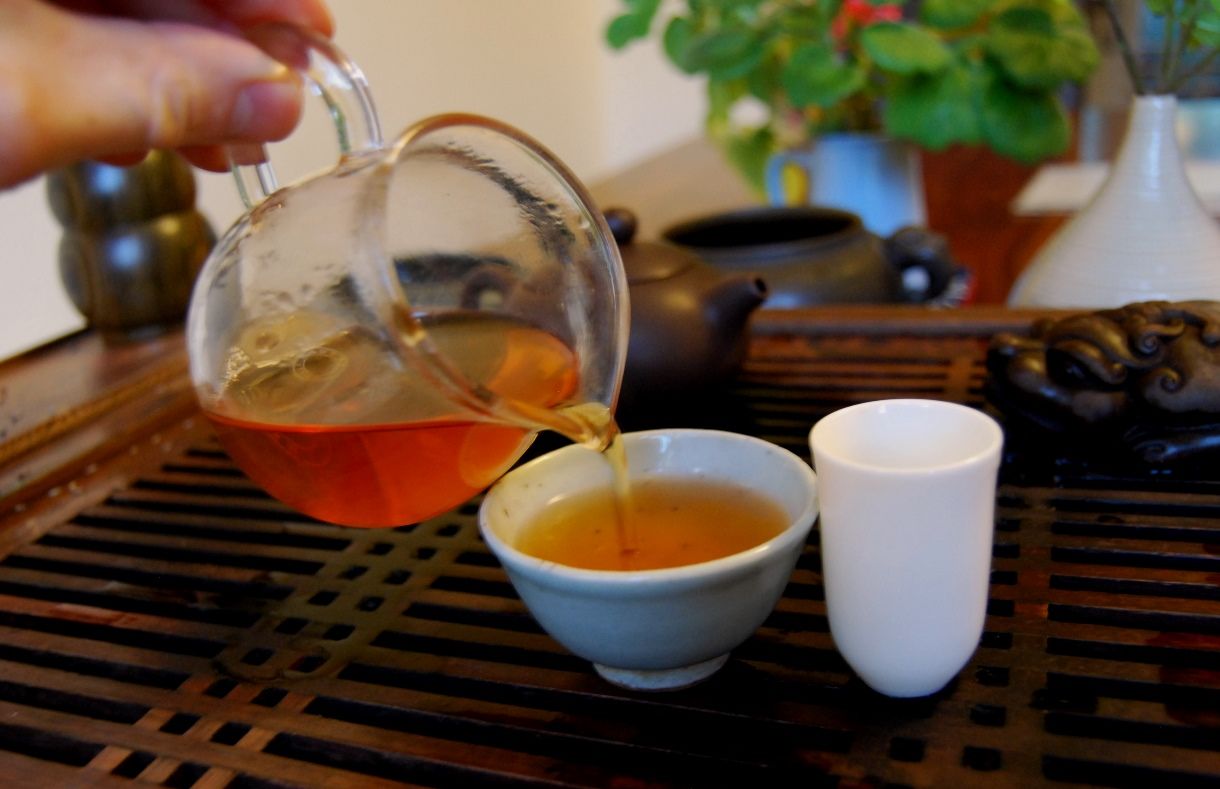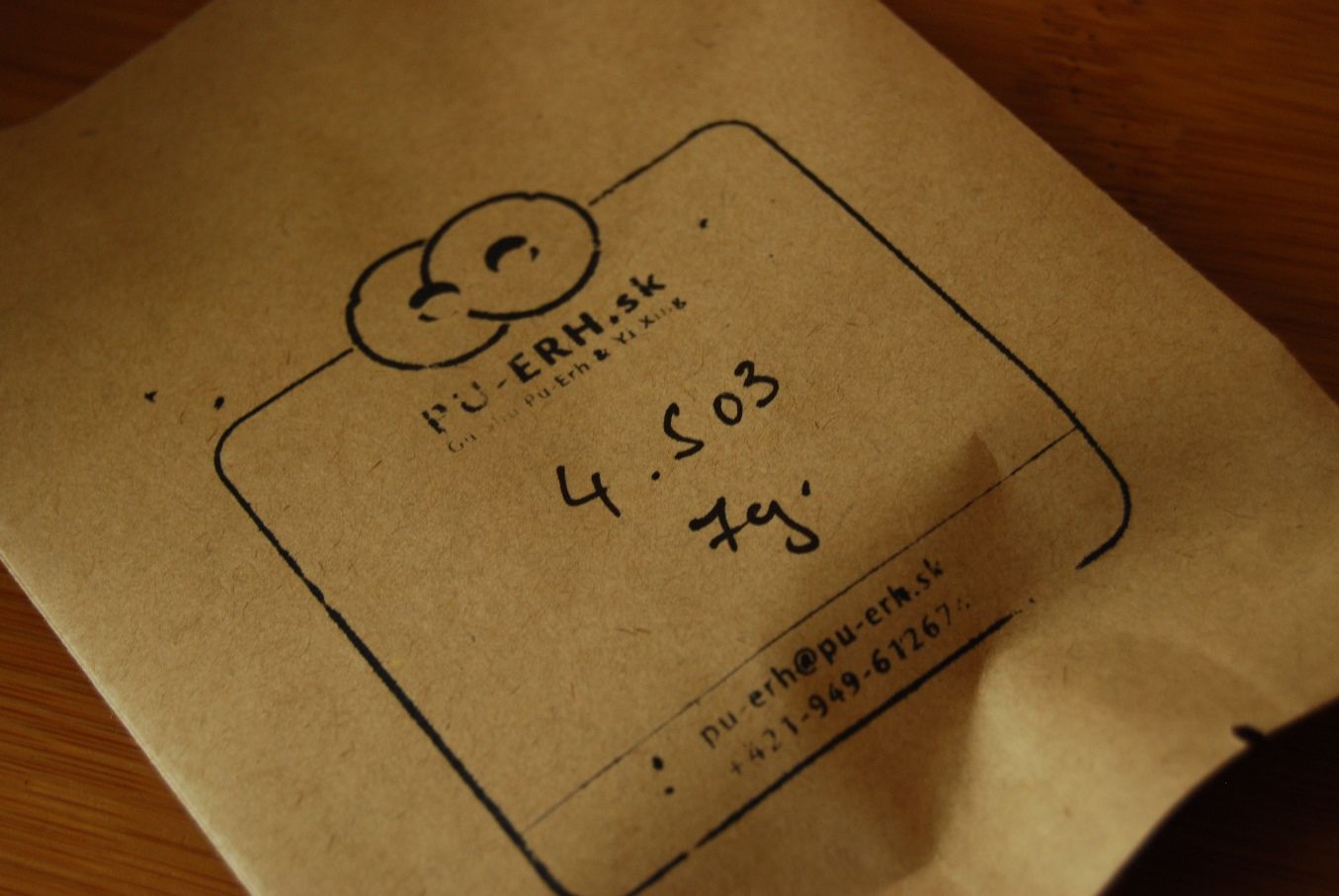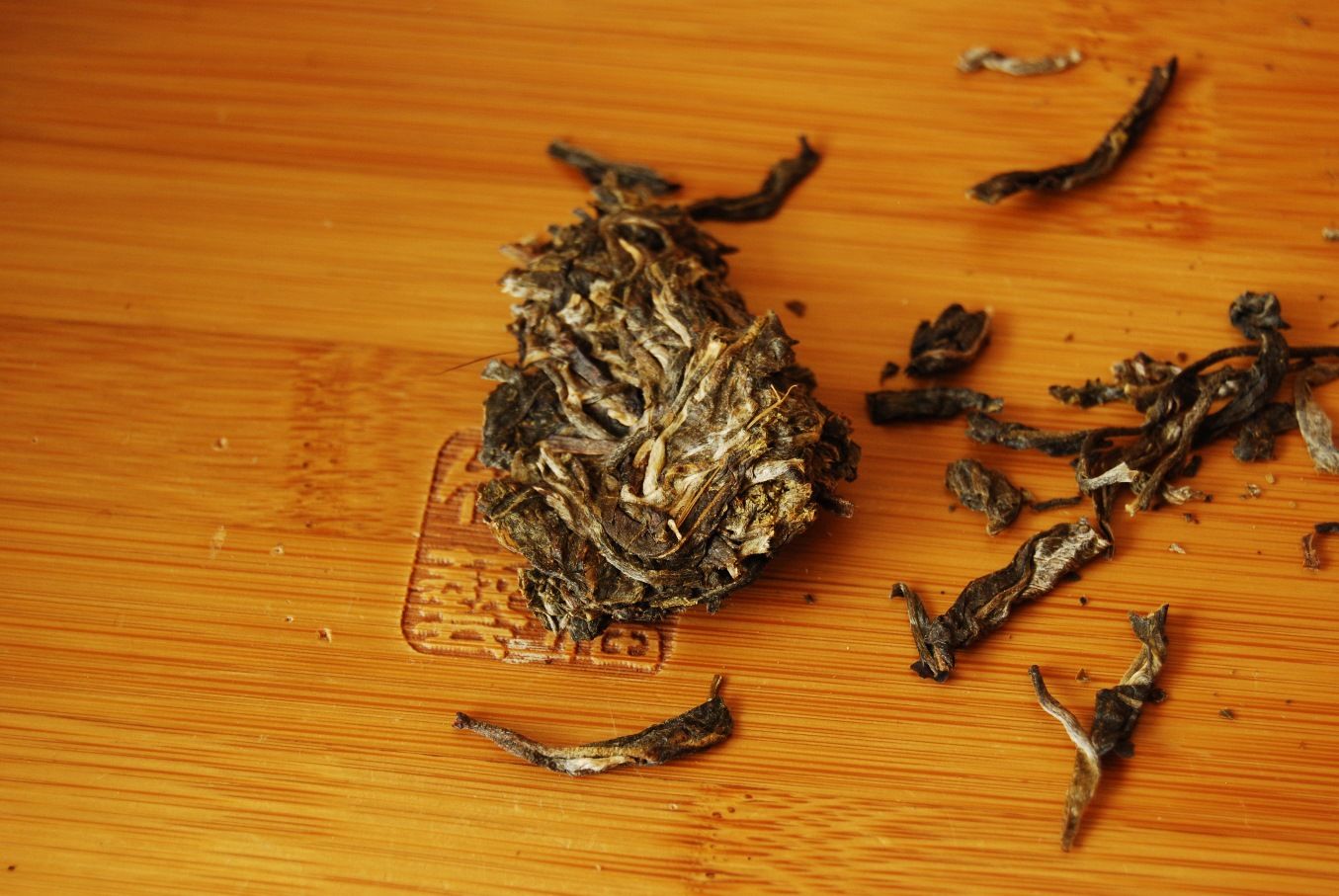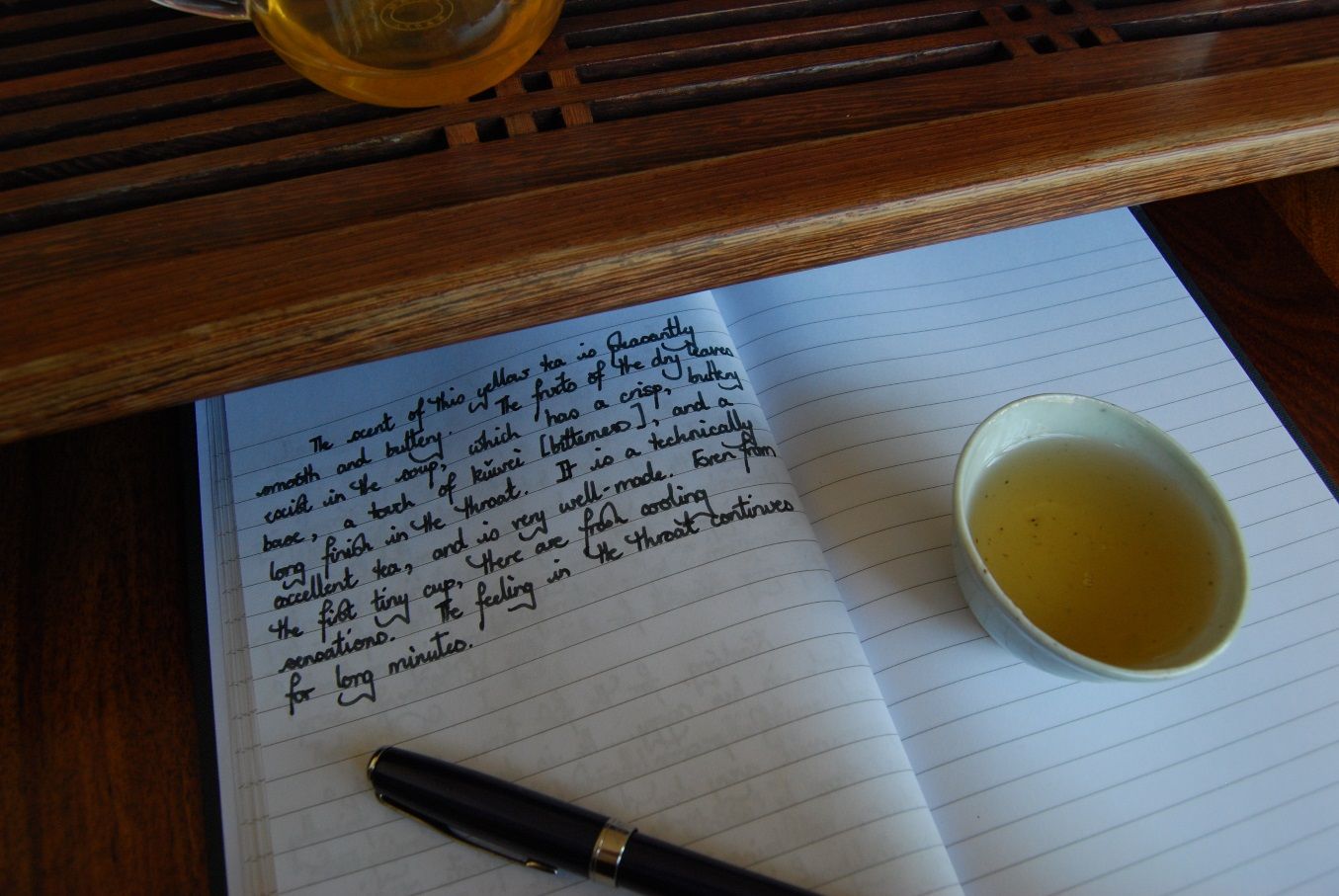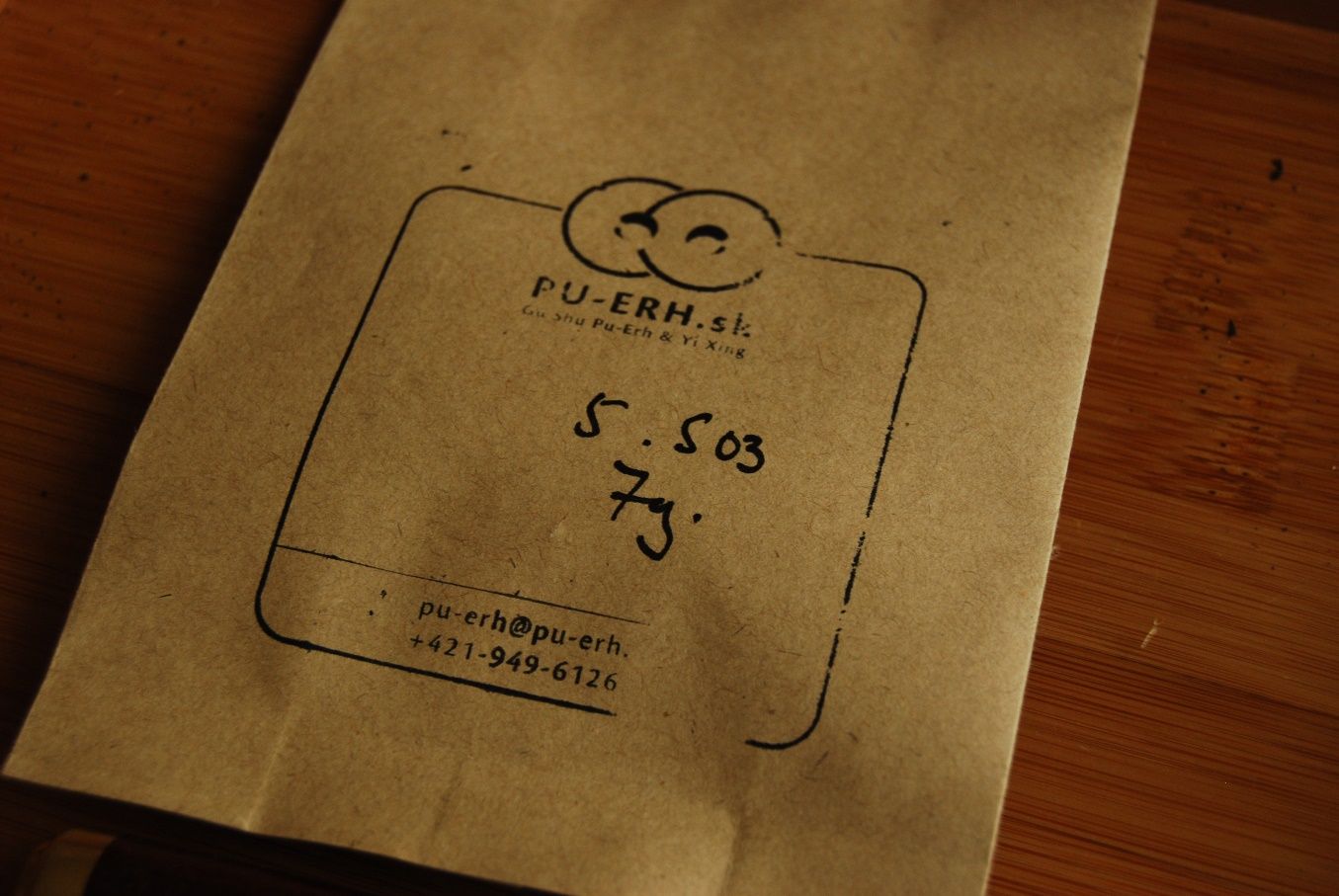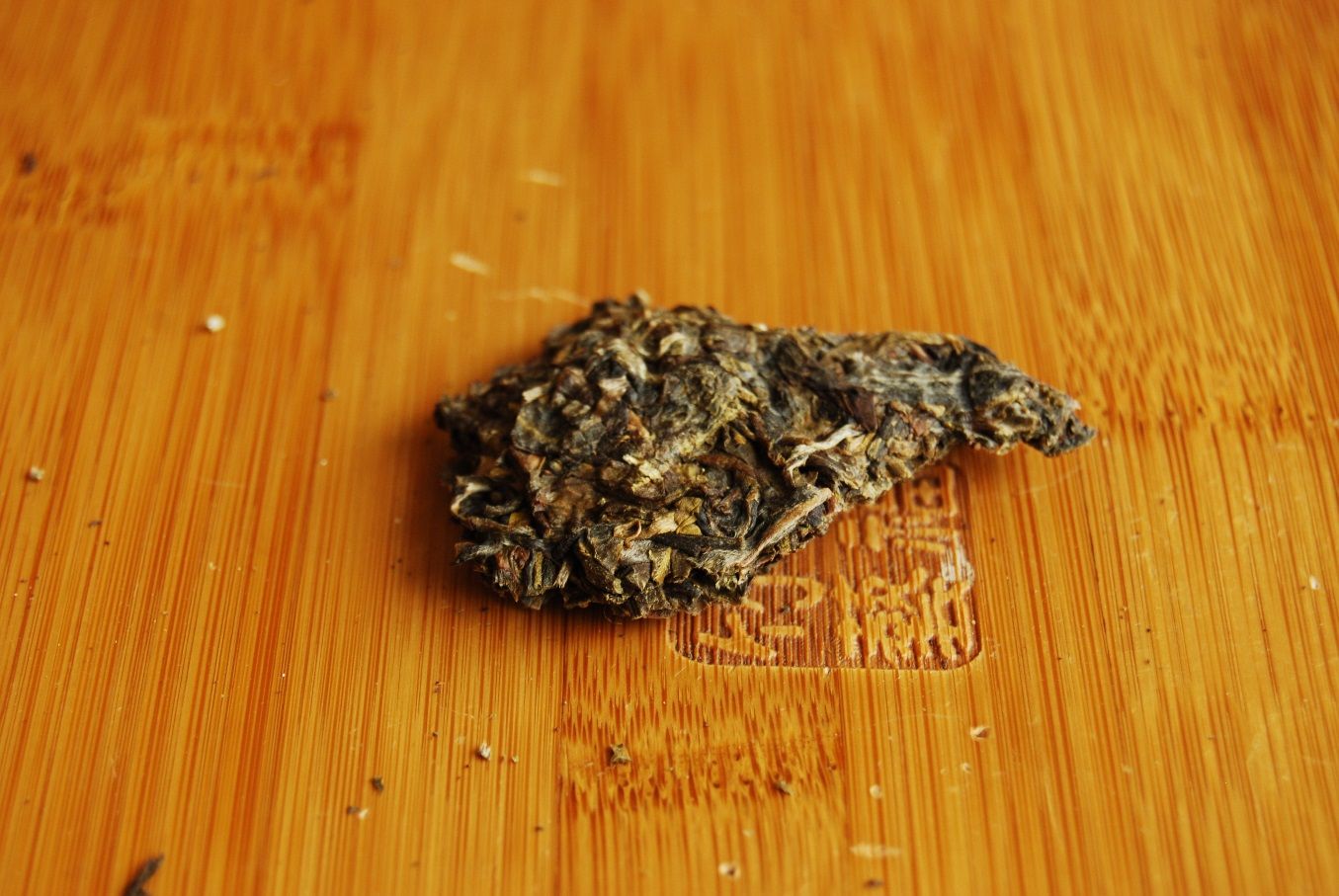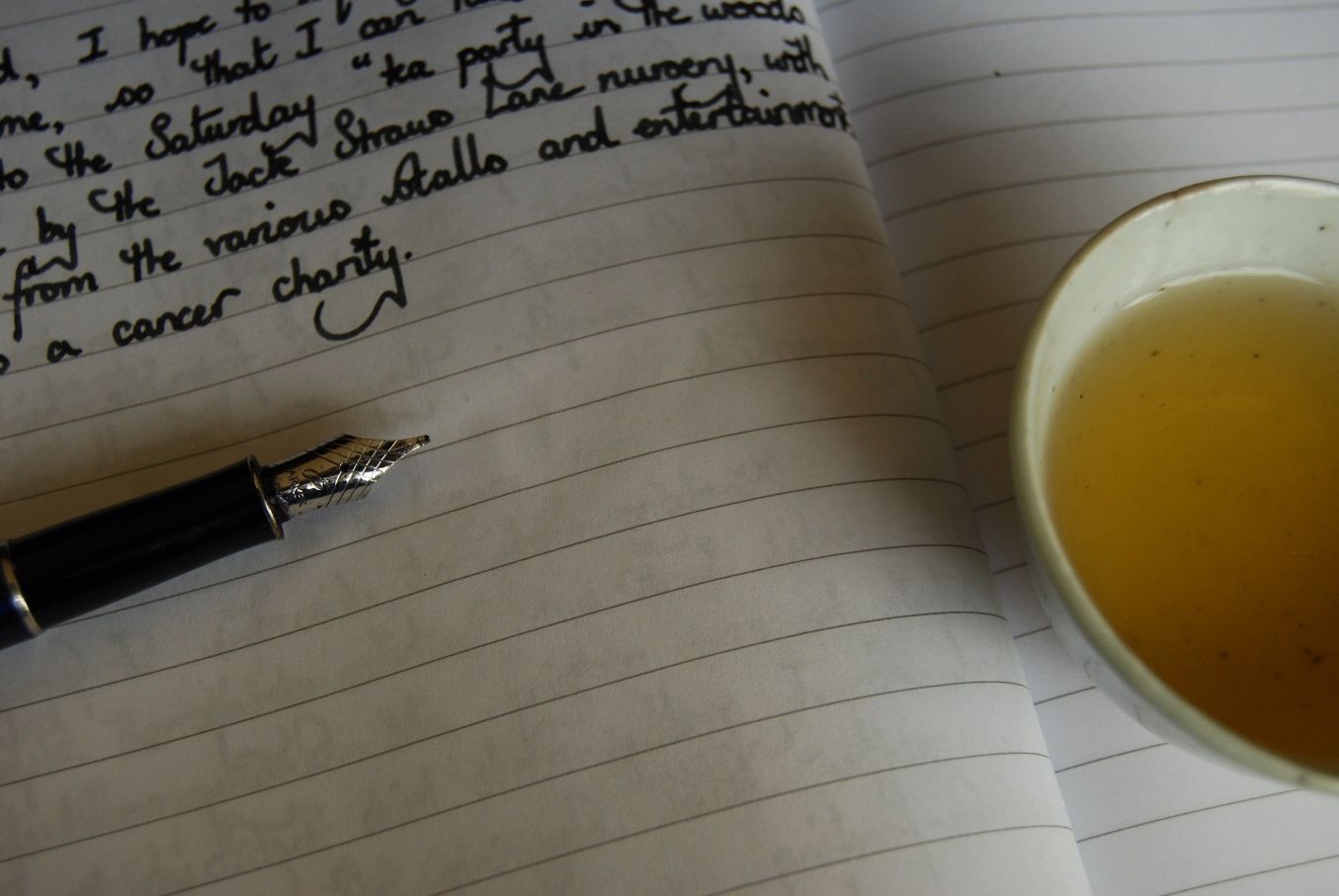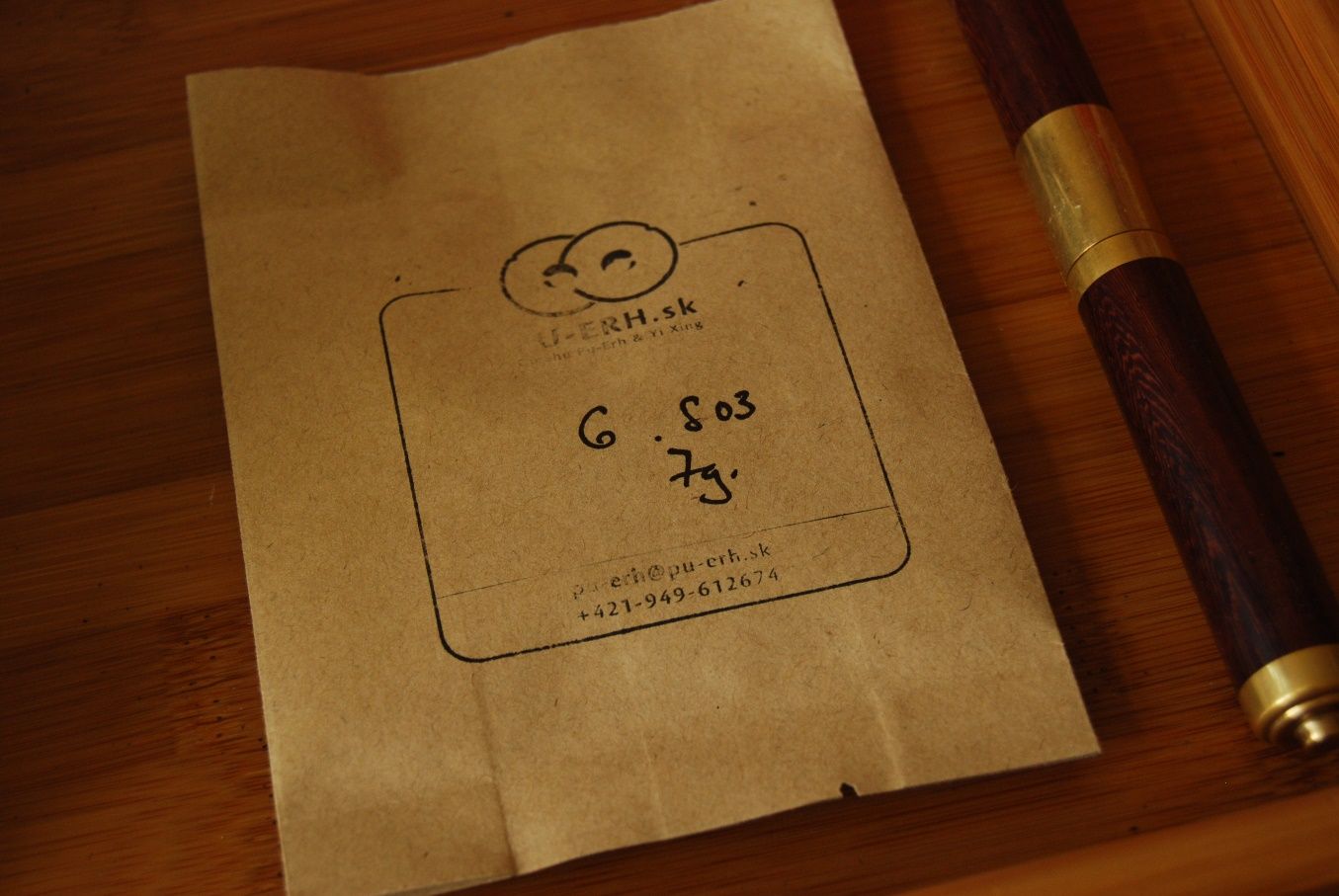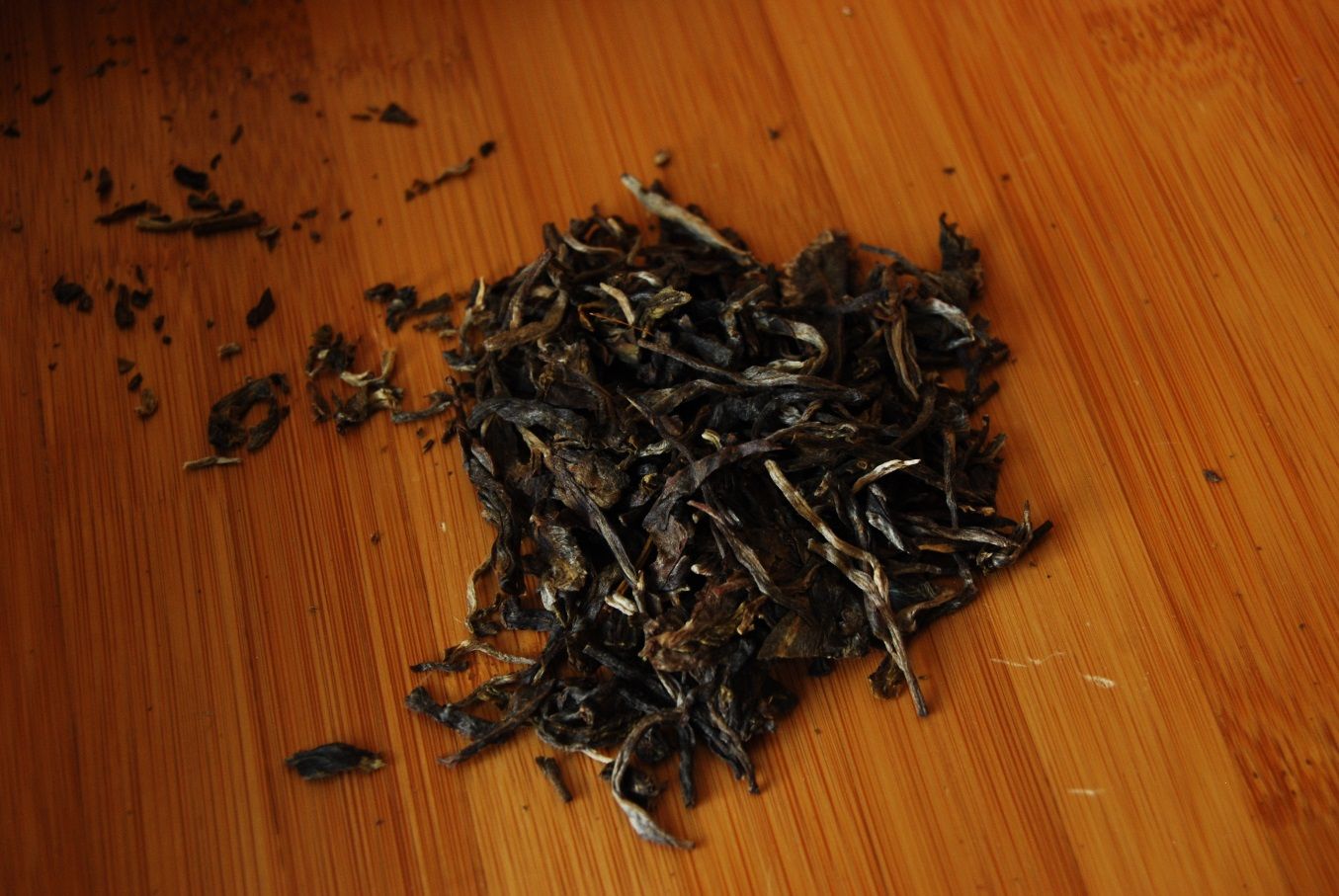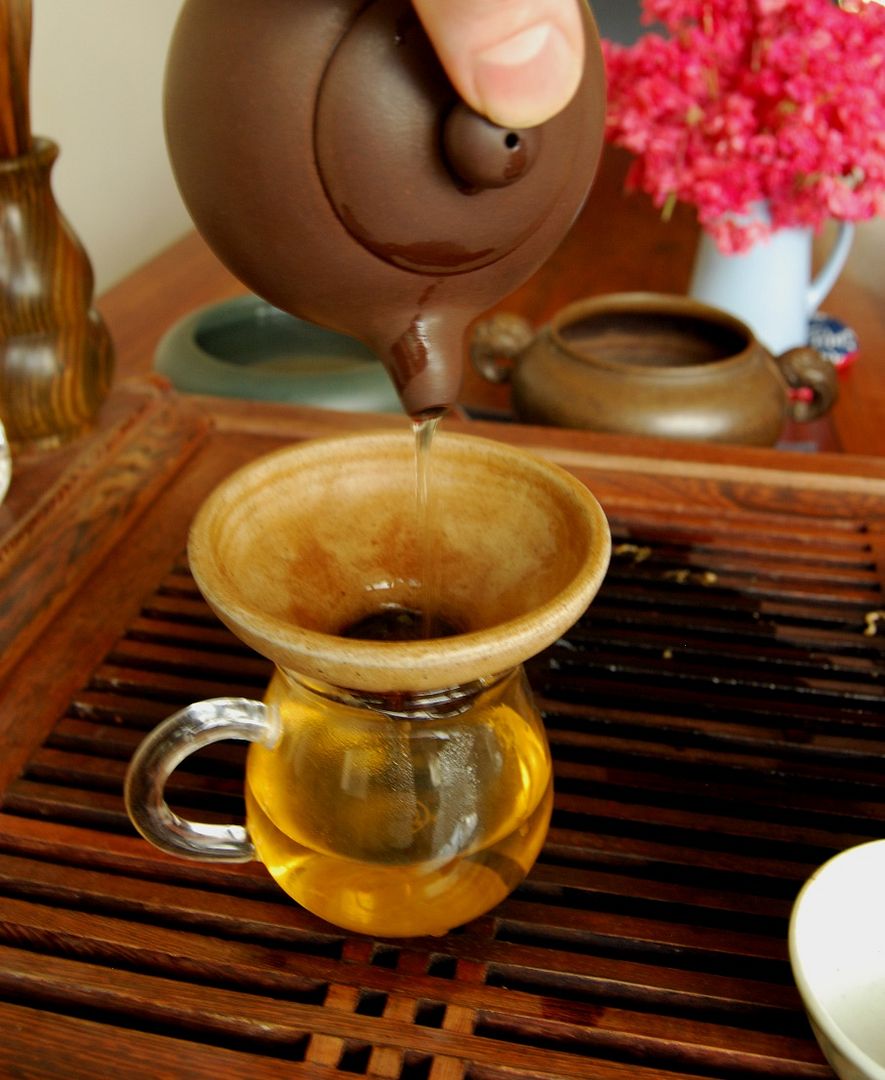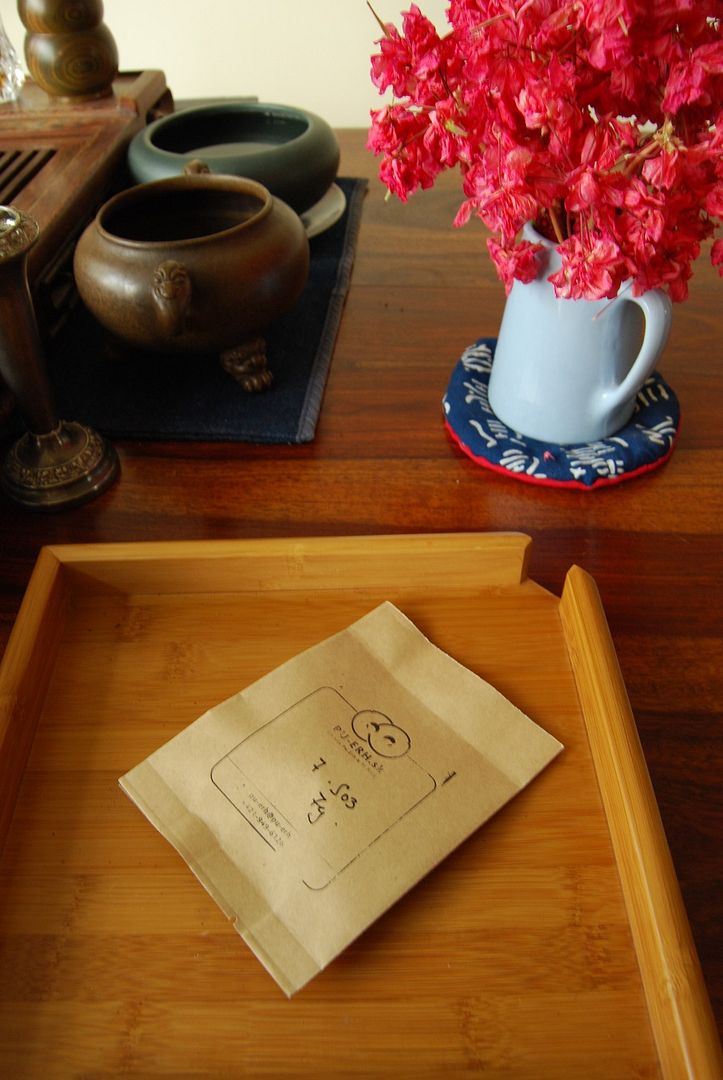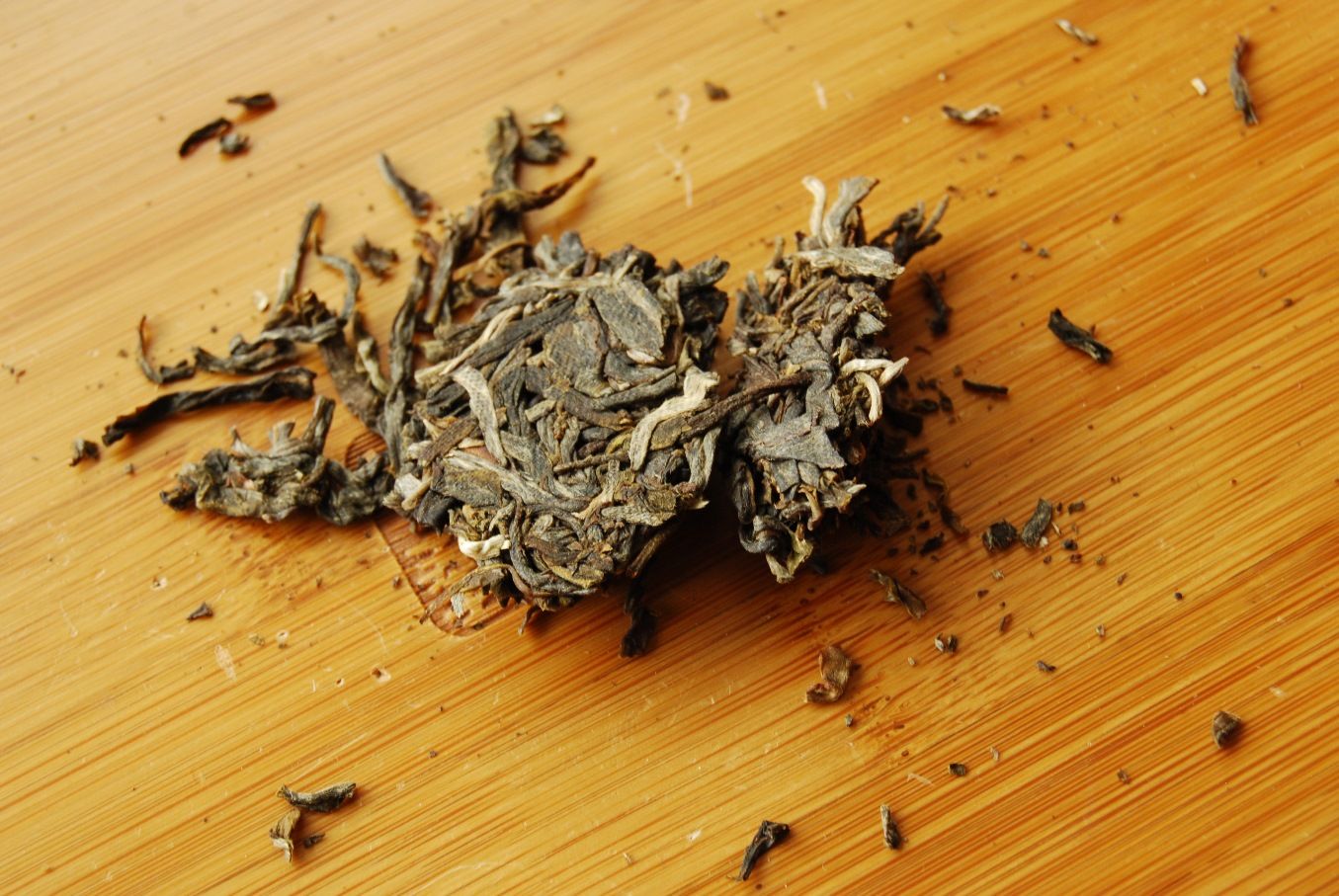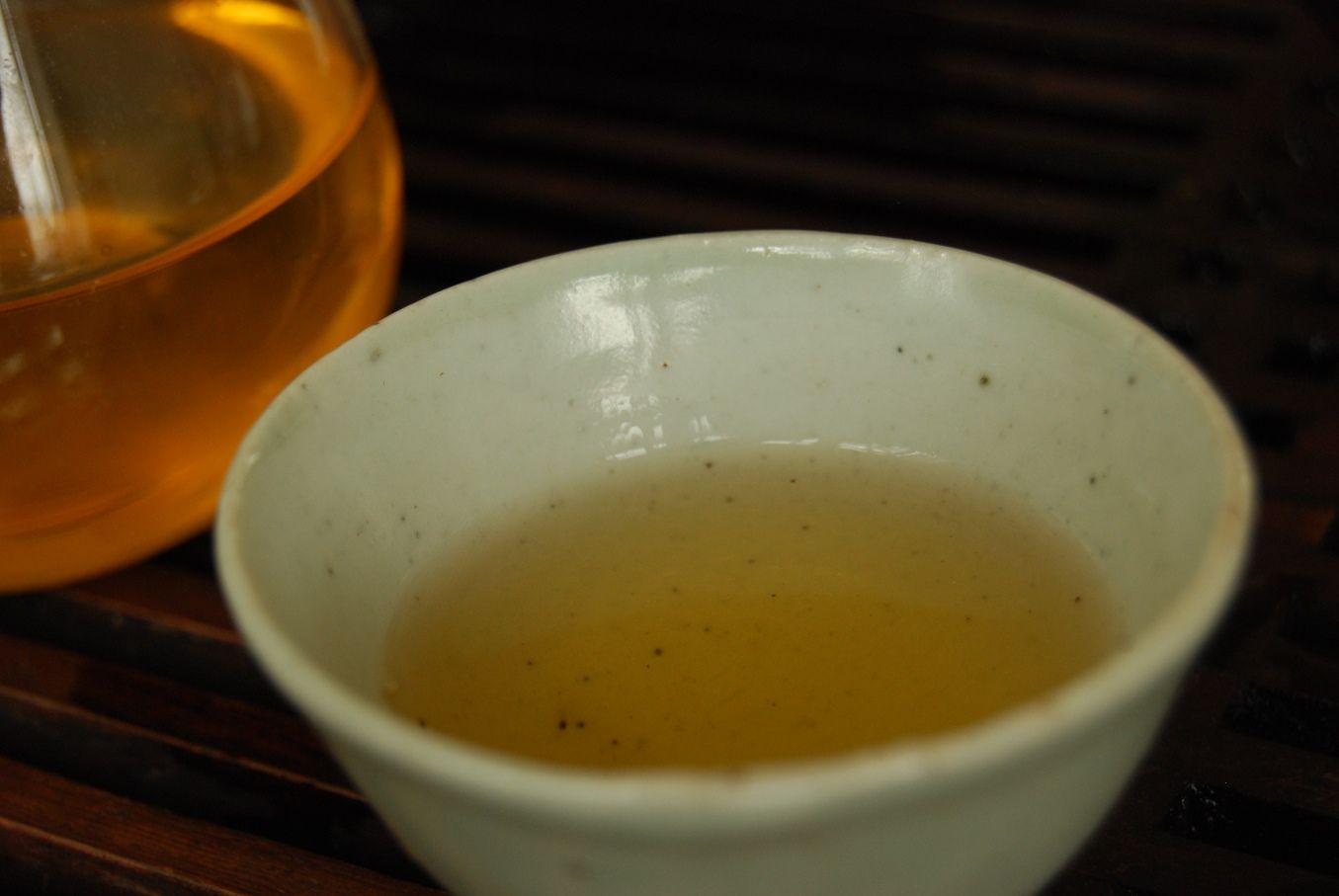Being tag-teamed by a Chinese academic brings to mind a highly amusing mental image.
However, the fact remains that I have been slammed into the figurative ropes of the wrestling ring, and need to extricate myself by means of answering the following questoids.
Make it so.
1. "How were you introduced and fell in love with the wonderful beverage of tea?"
You know, I'm completely the wrong person for such questions. To begin with, I see only the grammatical error in the question. I cannot see past it. Clauses have to agree, grammatically, and in this question, they do not. It is the kind of error that leads me to wonder as to the nature of the soul behind the question. So, I start following the chain of links up from the Duke of N, all the way up to the ultimate source: "the tea cup of life".
It is an illuminating journey. I am familiar with the first link in the chain, because I have reading the output of the Ducato di N for the majority of the last decade. The Duke of N may be many virtuous things, but a murderer of grammar he is not. We work our way slowly back up the chain of "tea blogs" and suddenly I am far, far, far out of my comfort zone. All of sudden we have curly fonts and pictures of white porcelain. We have pictures of table settings (i.e., with tablecloths) and, may the Lord have mercy on our souls, we have discussions of teacakes. I don't know where we are, but I am scared. There are things out there that people shouldn't have to see.
I've seen things... you people wouldn't believe... attack ships on fire off the shoulder of Orion...
Curling up into a ball, hugging my knees tightly to chest, I begin to regain control of my breathing. In... out... in... out... My vision returns. My mind recoils from the horror of an infinity of tea blogs, stretching out in all directions as far as the eye can see. I focus on the present. I return to safety.
Some things are beyond the comprehension of the mortal mind. The only thing that keeps us from madness is our inability to see the horrific, infinite truth, stretching off into the abyss.
As my hands stop trembling, I realise that I have not answered the exam question. I steel myself, trying not to prevent my mind from wondering about the remainder of the questions yet to come.
So, then. How was I introduced and [HRRRNNNGGGG] fell in love with the [HRRRARRRGLE] wonderful beverage of tea?
A searing pain tears across my chest, making my vision white, as I struggle to parse the sentence. My breathing is laboured, hoarse; my tongue, a dry rag slung against the side of my throat. A number of pills may have passed from pill-bottle to mouth; I cannot recall. Merely, I am aware that later, much later, my consciousness returns.
---
Tea. I was introduced to it in the womb. It came down the umbilical cord in its unadulterated form. Tea is the glue that binds life together in England. We drink it by default. It is the cure to all ills, the panacea.
Did I "fall in love" with it? Is a dry, rancid soul such as my own capable of such lofty emotion? I can tolerate tea in a way that I cannot tolerate much else.
Perhaps I really am the wrong person for such questions. Let us plough on.
2. "What was the very first tea blend that you ever tried?"
I conclude that the writer of these questions is foreign to me in a way that I will never understand. Is this the stage of the proceedings at which one should write "mint chocolatte eggnog nipple-tweak energiser"?
Like every other life form in England, I have consumed "tea" since before the day I was born. I imagine that the real answer to this question, in my case, is "English breakfast", but that really depends on whatever it was that my mother happened to be drinking when I was happily gestating.
3. "When did you start your tea blog and what was your hope for creating it?"
Heavens, we're only on question 3. At least this one is a little more explicable. I fired up the ol' Half-Dipper in the spring of 2007, back when I was a fresh-faced young man, eyes wide in joyous wonder at the rapturous possibilities that the future held in store. Obviously, I am now a decrepit crustacean.
Documentation forms a major part of my life. I have a some fifty or so journals, stretching back to when I was 18, and two dozen logbooks that describe my work and the details of the experiments that form part of it. A tea blog was a natural extension of this process. I cannot remember very much at all, and so having a searchable list of my conclusions concerning matters related to tea seemed to offer the same possibilities as do my journals or laboratory logbooks.
Later, after tonking around for some considerable period, I came to appreciate that the real fun with the web-site came from bouncing ideas off like-minded (i.e., rabidly strange) individuals. There is a chance, Gentle Reader, that you fall within this category, if you are reading this.
4. "List one thing most rewarding about your blog and one thing most discouraging."
We have may surmised, looking at the above text, that I (and probably you) are not immediately similar to that which the majority of people might call "tea people". I dislike that label immensely, in fact, because it is a diminutive. You, Gentle Reader, are so very much more than a "tea" person. You are, quite probably, entirely fascinating. You might be a scholar, a warrior, a poet, or perhaps even (as the youth of today might say) a d-bag. You are, undoubtedly, more than someone who consumes a drink.
I sigh a weary sigh as I realise that I have not even remotely answered this question. What is rewarding about my blog? People. Connections. If you were not here, Gentle Reader, then I would be just a strange individual shouting at an empty space. Instead, I enjoy the luxurious facility of intercourse. Intercourse! With you! It is an entirely satisfactory experience.
The most discouraging? I don't find much, if anything, discouraging about the whole affair. People come and go - even you and I will go, perhaps sooner, perhaps later. This transient behaviour of readers and writers is a charming feature of the medium, in fact - it is the constant reinvention that makes for renewal.
Actually, I just thought of something. The one thing I dislike. It is the adoption of the word "scholar" when referring to tea. Ladies and gentlemen, I give you the one discouragement that I have encountered: "scholar tea". The chap who coined this phrase is a lovely one, whom I like very much. You might remember him. It is more the phrase itself that is the problem - the notion that something I love so dearly (i.e., scholarship) could be co-opted to hawk tea.
"That's all I have", as our American cousins might say.
5. "What type of tea are you most likely to be caught sipping on?"
I feel that these questions are quite revealing as to the texture of the mind that generated them. It is not a texture that is immediately recognisable to me, and I have to feel my way around it in the same way as a newborn might require continued tactile sensation to come to an understanding.
I drink Right Tea. I do not drink "good tea" or "excellent tea", because that is rather a lazy description. Sometimes, I drink downright horrible tea. However, I always drink the Right Tea. Every day.
6. "Favourite tea latte to indulge in?"
I would like to meet the person that created these questions solely for the purpose of extending my comprehension as to the vast and infinitely-varied spectrum that comprises humanity.
I am consistently amazed, year on year, by how many new types of people there are out there - people thinking and existing in a manner that I would have hitherto not even thought possible. Rather, so alien are these souls to my own that I could not even conceive of their existence, let alone their impossibility.
And yet, somehow, such people exist.
It's a miracle, really. Nature is a miracle-worker, and we, Gentle Reader, are witnessing the results of that magic. It is a humbling thought.
7. "Favourite treat to pair with your tea?"
Malaise? Ennui? Artery-splitting terror that I might be asked such a dread question?
8. "If there was one place in the world that you could explore the tea culture at, where would it be and why?"
If there was [HRRRNNNGG] one place in the world that you could explore the tea culture at [HR-HR-HRRRUNNNNNGGGH], where would it be and why?
My physiology attempts to cope with the brutal violence done to our dear language. Merely writing it, tapping fingers against keys, has caused my systolic blood pressure to rise beyond that of an exploding sun.
I... I... you win. You win. You have challenged me, and won. You have bested me in combat. I am honour-bound to answer the remainder of your questions.
9. "Any tea time rituals that you have that you'd like to share?"
I begin to suspect that the victor in this combat, which is to say the originator of these fell questions, may come from the United States of America. The notion of "sharing" in this context is very definitely foreign. It makes me feel similar to that sensation I experience when I hear the word "leverage" used as a verb. It is akin to describing a problem as a "space" or as an "issue".
I have rituals, and plenty of them, all of which are automated and performed without intervention by my consciousness. I am sure that you have them, too, of your own sort, Gentle Reader.
We have learned the rules, and then forgotten them.
10. "Time of day you enjoy drinking tea the most: Morning, Noon, Night, or Anytime?"
Such cavalier use of capitalisation is to be admired, really. They say that Shakespeare created three times more new words, and new usage of existing words, than anyone else in the history of the English language. This spirit lives on in the driving force behind these questions.
I would love to experience the complete freedom to play with language and syntax in such a way, but I am constrained and limited in a way that the questioner is not. The ceiling is low indeed, for me, and I scrape against it, while the devisor of these questions soars high above, in the clouds, free and unbound.
11. "What's one thing you wish for tea in future?"
Tea is just a drink. My advice would be, if I may be so bold as to venture advice, do not limit yourself by association.
"Buddha is in the details", it is said, and so while tea is "just a drink", it contains so much more. Do I wish anything for tea? Not particularly.
However, I wish very much for you, Gentle Reader, and that is surely the purpose of our time together.
12. "Whom do you tag?"
The buck stops here. I will be the Atlas to your globe, Gentle Reader, and bear the weight of your subsequent judgement.
I pray you, be favourable.
Pages
▼
28 November, 2013
27 November, 2013
25 November, 2013
Voltron
"We form like Voltron, and he... he just happen to be the head."
I cannot believe that this site exists, but be thankful that it does. It's like the wikipedia of Wu-Tang lyrics. With graphics and audio clips to navigate the 36 chambers. Un-be-lievable.
Next up, a trip across to the Bulangshan region, for Bangpen:
Finally, an actual cake:
I cannot believe that this site exists, but be thankful that it does. It's like the wikipedia of Wu-Tang lyrics. With graphics and audio clips to navigate the 36 chambers. Un-be-lievable.
While Peter of pu-erh.sk may not quite be THE GZA, if we formed like Voltron he would at least be fairly close to the shoulders. Or the lumbar region, at minimum.
Today's teas include a few samplers that don't appear to have made it onto his web-site, by which are, as always, a complete and total education - and therefore very gratefully received.
Today's teas include a few samplers that don't appear to have made it onto his web-site, by which are, as always, a complete and total education - and therefore very gratefully received.
The purile part of me always finds the name "Yibang" extremely amusing (Chinese has a virtually silent "y" at the start of this vowel sound), akin to "Badabing" or, every schoolboy's favourite, "Chawang".
Famous for its short leaves, Yibangshan is usually sweet and approachable. This particular sample, maocha as pictured above, has no breakage.
This is good tea: the scent is heavy, buttery, and particularly long-lasting. The body is tangy, pollenated grass; its soup, pictured above, is just as you would expect. It has more fruitiness than other "grassy" teas - the thick, grassy sweetness is entirely charming here. It is a very optimistic tea - perfect for an unusually sunny morning, in the middle of the week.
I let the tea decide the length of the session: if it wishes to stay longer, then it may do so. Everything (and everyone) has its own pace, and it is all we can do simply to allow each to their own tempo, without attempting to force them otherwise.
Next up, a trip across to the Bulangshan region, for Bangpen:
The long-leaf maocha, pictured below, looks beautiful indeed. The scent of the dry leaves is a gentle sweetness. The rain has just stopped, it is near the week-end at the time of writing (days after the Yibangshan above).
The tea is good: it has the content and quality of gushu [ancient tree]. As with many Bulangshan teas, it is strong; it is also compact, dense, very clean, and sweet to its core. That sweetness is second to a broad base of lower "biscuit", almost Mengsong, characteristics.
Hints of old honey mix with the sharp kuwei [good bitterness] of the region. It has a reasonably-textured soup, but is not "thick". I like its delivery of a sequence of clean, precise, fairly enjoyable infusions.
Lifted by its energy, I concluded that this tea was more about core Bulangshan characteristics, in the end, which is no bad thing.
Finally, an actual cake:
With the 2004 version of this "special" (?) Big Green Tree selling for 64 Euro, this 2001 version priced at 140 Euro is curiously-priced. They are both, Peter writes, "tailor-made private productions", and notes that both have different wrappers to the standard Big Green Tree cakes. This 2001 has been stored in Guangzhou, with a single year in Taiwan.
The dark, slightly fragmented leaves have the scent of old Yiwushan. Warmth, Yiwushan sweetness, vibrancy in the mouth: this "BGT" (or "Beej") is a solid cake. It carries its sweet straw from the tingling tip of the tongue all the way back into the throat, remaining sweet long after the swallow. It is gently calming; I breathe a slow sigh and straighten my back.
The session lasts for two days, as I am determined not to disrespect the tea by finishing early. The second session occurred after swimming for an hour or so. After 3 km, the last 2.5 km completed without stopping (somehow), I am totally ready for comforting tea.
If we formed like Voltron, then I have a feeling that I may be south of the waistline.
22 November, 2013
Quick Test: Do You Have a Soul?
IF
you can make it to 1'30" or beyond in this track without falling completely in love with it
THEN
you probably have no soul.
ENDIF
The long, beautiful leaves (shown above) have a low, sweet scent of clean storage.
you can make it to 1'30" or beyond in this track without falling completely in love with it
THEN
you probably have no soul.
ENDIF
Ockham's Chainsaw
If, at any point, you thought about Tetris, then you probably need to give yourself a good slap, as well as attend confession. This is great music, pure and simple, playing through the medium of retro chiptune. Some great things come in packages that you might not expect. The world is full of things like this, tea being but one example.
Both of the teas covered in this article come under the heading of "cakes pressed using old maocha". You may or may not agree with this practice. All I ask is, as with the chiptune epic track linked above, just keep an open mind.
Daxueshan is the mountain in Yongde county of Lincang diqu. Its price is high (£85) but Mr. Essence seems impressed by its laoshu [old tree] qualities. It was stored in Kunming, and Mr. Essence notes that it has not aged as much as its cousin, which we will cover in the second half of this article.
The long leaves, pictured above, have an excellent scent of rich, sweet tobacco. It could be as good as is claimed.
The reticent storage of Kunming has worked to the advantage of this tea. Maocha, stored as maocha (that is, in its loose-leaf format) can dissipate rapidly. This is one of the reasons that cakes are still pressed, long after the needs for horse-born transport have passed. The slower aging in Kunming has caused the dissipation to be less rapid than it otherwise would have been, and the cake therefore retains some of its energy.
The soup is heavy and full, pushing into all corners of the mouth from the outset, with a good, malty base. This tea tastes particularly comforting after the happy tiredness induced from a long session at the swimming pool with Xiaohu. It is a good tea, and it lasts well. The price is up for the usual debate.
You may remember the fictitious village of "Qishenggu" that resulted in the 2012 version. Mr. Essence prefers not to disclose the actual origin of this tea.
This 2007 version was, like the Daxueshan, pressed in 2013. However, in this case, the maocha was stored in... wherever "Qishenggu" happens to be. Presumably, it is not Kunming (heh), because the aging has been more rapid.
The long, beautiful leaves (shown above) have a low, sweet scent of clean storage.
The orange soup is the same colour as our English-stored 2007s. There are low, quiet scents around the edges of the wenxiangbei [aroma cup]. Like the scent, it exists in the mouth around the edges of my senses. Heavy and thick, it has the comforting feeling of old tea.
There is the consequent emptiness in the leaves that comes with storing maocha, exacerbated by the more humid and warm storage of "Qishenggu". With more leaves added to the pot, in an attempt to compensate, a sharpness develops - that of clean pine. Unafraid, I eventually end up with the entire sample bag in the pot. The tea seems impossible to overbrew, such is its low ceiling. It remains sharp and smooth, with some low maltiness, however. At £45, this is one of Essence of Tea's cheapest teas.
If you are looking for a recommendation made with certainty, and you passed the "are you in possession of a soul" test mentioned at the outset of this article, then you would do well to look at the above album. Great pu'ercha music, like pu'ercha itself, comes from unexpected places.
20 November, 2013
18 November, 2013
Holidays in the Sun
I am guessing that Mr. and Mrs. Essence have been to Malaysia, because there follows a trio of genuinely delicious teas that all seem to have Malaysia in common. I may be there (sadly, only on academic business) during the winter vac, and would be oh-so-delighted if my trip turned up any of these bad boys.
First out of the Malaysian starting stalls: a "special order" version of the standard 7542 recipe, which was given "humid" (heh) storage in Hong Kong before being wrapped and put out for sale for a year. It was bought in 2003 and stored in Malaysia since then, which has, we are told, seen to dissipate the "dank, rancid skankiness". (That quote may not quite be verbatim.)
Silly, silly me: I glanced at the price before drinking the tea, which is a capital crime. No tea can live up to four-hundred-and-ninety-five pounds sterling, in my opinion, unless it is tremendous. This is, invariably, a great way for me to feel extremely negative about a tea before the session has started, which is a completely daft thing to do.
I try to rinse out those negative thoughts with some up-beat chiptune/dnb from Sabrepulse. You should try the same, trust me.
Aural cleansing thus performed, I commence the libation.
I use the whole 10g sample, which results in a big, fat scent that is almost "plummy". There is something of red dates about it. "All signs point to yes", as the magic 8-ball might say.
Note to self: purchase magic 8-ball ready to answer student questions when they arise.
Note to reader: if you are from a culture that has no exposure to the magic 8-ball, it would behoove you to get your Google on. You have NO idea what you're missing, in terms of human wisdom.
Note to self: purchase magic 8-ball ready to answer student questions when they arise.
Note to reader: if you are from a culture that has no exposure to the magic 8-ball, it would behoove you to get your Google on. You have NO idea what you're missing, in terms of human wisdom.
The mineral shicang [damp storehouse] character is present, but the decade in Malaysia has been beneficial. The result is fresh and crisp. It is, however, too late to buy cakes like this, due to the prices. I need some further Sabrepulse thought-cleansing.
The body of this tea is smooth vanilla, gentle warmth, and comfort for my own body. As you can tell from the photographs in this article, this is a fine, heavy, dark tea that is really very good. The soothing and energising nature that it exhibits are fine indeed. I just wish that I hadn't looked at the price before drinking it.
Silly, silly me.
A cake without neifei [inner ticket], wrapper, or known region of origin, this enigmatic tea sells for £76. I really, really need to stop looking at the prices before I drink.
As its name suggests, it was ordered in 2004 by a Malaysian collector. The leaves are dark and dusty, and have a very gentle scent of humid storage.
Likewise, there is little to detect in the wenxiangbei [aroma cup]. Its soup is a very heavy red-orange; the character in the mouth is energetic, but filled with the basic red malt of humid conditions, with little else available. The kuwei [good bitterness] has been sacrificed in the fires of hot Asian storage in humid conditions. It is, at least, thick and smooth, as Nada writes in his description of the product. It is fair to describe this as "basic".
I find it to be heavy and calming on the day I tried it. Looking at the date of its origin, 2004, I am reminded of June in that year, when I went to a machine learning conference just before I started my doctoral degree and met a pretty Chinese girl who was one year into hers. We spent all night out on the beach, trailing wine-glasses and empty bottles as we returned to the conference hotel, which surprised the conference delegates. We were married one year later.
Now this could be more like it! A "special order" from Bulangshan, from the year 2008, this was ordered from (and this may not be a surprise) a Malaysian.
The red-orange soup seems comforting at 5.36 a.m. For some reason, I woke early, and decided to squeeze in a session before the morning routine of washing, feeding, playing with, and reading to children begins.
Malaysian storage has been good to this tea: it has a sharp edge of kuwei that has not been trampled into humid redness. There is a strong, beefy body much beloved of Bulangshan, and it draws water into the mouth in "shengjin". There is even some woodiness, something that I enjoy in the less heated storage of Singapore (and even here in England). Its solid, thick texture immediately commends itself.
The soft woodiness develops yet further in the third infusion, revealing hints of wildflowers, of all things. It is a captivating tea, and rewards attention. The more I drink this tea, the more enthused about it I become. Pu'ercha can be a true delight. I won't spoil this tea with talk of prices. It's a nice one.
- with thanks to Mr. Essence for the introduction to three Malaysia delights.
- with thanks to Mr. Essence for the introduction to three Malaysia delights.
15 November, 2013
Slovakian Tea: Part II of II
Europe, we need to talk. Help me out here. My country is currently going through a heavy anti-immigration, and particularly anti-European, phase following the EU bail-outs after 2008. The mainstream parties are turning against Jonathan Foreigner, perhaps to the detriment of our economy, and "fringe" parties are popping up (and gaining votes) who promise a tougher response to Europe.
I am, approximately, as Europhile as it gets among the English. I love to "get by" with my mix of badly-spoken languages vaguely remembered from school. I love the fact that you eat sweet cakes for breakfast. The fact that your music is like bad British music from the late 90s is actually endearing. Writing from Brussels, which is one of my favourite places in Europe, I am thrilled by the mixture of semi-Dutch and French which just about allows me to go about my daily business. I love the fact that you address me in French first, Dutch second, and then think to try English. And yet. And yet. You're making it hard for me. You're making it difficult for me to love you.
Europe can be a hideous frustration. More than once last night, while attempting to find my hotel (bearing in mind I can actually read French, more or less), I noticed that I was shouting at my map: "OF COURSE THIS STREET WOULDN'T BE SIGNPOSTED. WHY WOULD SIGNS BE USEFUL IN A CAPITAL CITY?" In fact, the place that I was trying to find was called "DEFACQ", which is not pronounceable in any of the 24 languages of the EU. Predictably enough, I found myself muttering "WHAT DEFACQ" to myself a few times.
The machines that vend tickets for the (really very good) public transport system of metro and trams have no discernable mechanism by which one can manipulate the cursor on the screen. (I later discovered that one has to rotate the "OK" button to change one's selection on the screen. Naturally this is not indicated anywhere. And I'm an engineer by education.) There are absolutely no maps of the subway lines as one approaches the vending machines. You have to get by on memory, or guesswork. A single, scrubby map appears after the ticket barriers. Europe, I must also tell you that maps on this continent typically have north as "up" and, if they don't, you need to include an indication of which way north might be. Having south-south-east as the "up" direction, again unlabelled, is a particularly European form of Hell.
The examples never end. I love you, Europe, but you've got to work with me. Help me to help you. Unless... unless this is a ploy to restrict functional living to the cognoscenti. Maybe that's it. I am going to my meeting now, in an EU building nearby, and I will leave an hour of additional time to account for the fact that there are no street signs, markings, or landmarks of any kind, and that I will, in all likelihood, get lost and end up in Austria.
I am, approximately, as Europhile as it gets among the English. I love to "get by" with my mix of badly-spoken languages vaguely remembered from school. I love the fact that you eat sweet cakes for breakfast. The fact that your music is like bad British music from the late 90s is actually endearing. Writing from Brussels, which is one of my favourite places in Europe, I am thrilled by the mixture of semi-Dutch and French which just about allows me to go about my daily business. I love the fact that you address me in French first, Dutch second, and then think to try English. And yet. And yet. You're making it hard for me. You're making it difficult for me to love you.
Europe can be a hideous frustration. More than once last night, while attempting to find my hotel (bearing in mind I can actually read French, more or less), I noticed that I was shouting at my map: "OF COURSE THIS STREET WOULDN'T BE SIGNPOSTED. WHY WOULD SIGNS BE USEFUL IN A CAPITAL CITY?" In fact, the place that I was trying to find was called "DEFACQ", which is not pronounceable in any of the 24 languages of the EU. Predictably enough, I found myself muttering "WHAT DEFACQ" to myself a few times.
The machines that vend tickets for the (really very good) public transport system of metro and trams have no discernable mechanism by which one can manipulate the cursor on the screen. (I later discovered that one has to rotate the "OK" button to change one's selection on the screen. Naturally this is not indicated anywhere. And I'm an engineer by education.) There are absolutely no maps of the subway lines as one approaches the vending machines. You have to get by on memory, or guesswork. A single, scrubby map appears after the ticket barriers. Europe, I must also tell you that maps on this continent typically have north as "up" and, if they don't, you need to include an indication of which way north might be. Having south-south-east as the "up" direction, again unlabelled, is a particularly European form of Hell.
The examples never end. I love you, Europe, but you've got to work with me. Help me to help you. Unless... unless this is a ploy to restrict functional living to the cognoscenti. Maybe that's it. I am going to my meeting now, in an EU building nearby, and I will leave an hour of additional time to account for the fact that there are no street signs, markings, or landmarks of any kind, and that I will, in all likelihood, get lost and end up in Austria.
---
I like the notion that buying tea from Peter supports his explorations around Yunnan, which he then shares with us through the medium of tea leaves. It rather reminds me of the manner in which the great explorers of British history financed their expeditions.
"Your support has funded my return to Yunnan..." Peter writes in an e-mail to his subscribers, which he then follows with notes from his travels. It is something very old-fashioned, from that grand old time of undiscovered countries, and is instantly appealing.
There is no time for nostalgia when Bulangshan tea threatens one's very existence, as is the case with "S04". At 64 Euro / 250g, this is rather expensive. Peter writes that the cakes were pressed in Yiwu town, and that the compression was higher than usual - this latter is obvious from the leaves, pictured below.
The hardened mass of leaves in this small sample is unusually fruity for Bulangshan. The scent of this yellow tea is pleasantly smooth and buttery. The fruits of the dry leaves exist in the soup, which has a crisp, butter base, a touch of kuwei [good bitterness], and a long finish in the throat. It is a technically excellent tea, and is very well-made. Even from the first tiny cup, there are fresh cooling sensations. The feeling in the throat continues for long minutes.
True to form, the Bulangshan begins to exert itself by releasing a clean, almost metallic, kuwei by the third infusion. The sweet fruits have receded to allow the kuwei to push forward. It has the caramelised base of a tea that experience recent processing. The price is a touch high, given the risks involved in selecting a cake for aging, but the material is good.
Nakashan is our next stop, which is in the Mengsong area.
The Nakashan cakes were, apparently, all sold at the "pre-order" stage, which is great business indeed! I have passed the stage at which I am willing to gamble on pre-orders. There are so many "fish in the sea" these days that the need to panic-buy futures in a cake that I have not tried no longer appeals. The highly-compressed sample, pictured below, shows small and fragmented leaves.
The first infusion is, consequently, watery due to the compression. It has the gentle biscuit base that I associate with Mengsong-area teas, and a generally elegant character.
The second infusion demonstrates the quality of this tea: it has kuwei, that slightly cooked base of biscuit, and a wholesome sweetness that sits well in the throat.
Peter describes the character as being akin to that of "warm bread", which is probably the mapping of my "biscuit" into his vocabulary. It is sweet, slightly cooked to the point of gentle caramelisation, and very enjoyable. It is more bitter than the Banzhangshan to which Peter compares it. Brewed carefully, because it can get powerful, its quality shines.
Next, we travel to Hekai, a region in the Menghai area that encloses, among others, Manmai village.
I am in the mood for real Menghai tea, following a long session at the swimming pool (as is our weekly tradition) with my eldest son, Xiaohu. He is demanding, and full of beans, and Menghai tea can restore my happily-depleted energy levels.
The large, fragmented leaves have a heavy scent of low, dark sweetness that I take to be canonical for the region. The price is a reasonable, if not inexpensive, 52 Euro / 250g. It is an interesting tea: there is a full, heavy body, with the robust kuwei present even from the first infusion. The sweetness is that of strong Menghaixian tea. It remains strong and bitter, but is clean and precise. The dense yellow soup has a pollenated feeling; it is uncompromising and potent - this brings me back to myself rapidly, and gets me ready for an afternoon of chopping firewood.
"This is the kind of good tea that I enjoy, but which I would not buy", I have concluded. It was an excellent tea, but did not drag me to my Paypal account.
Finally, the seventh stop on our tour, we have my long-time buddy, Badashan.
The day I sat down to drink this tea followed a garden party from the university nursery, at which I took both of my sons around the various cake stalls and games. Two young boys, one father - when one is outnumbered, it is hard to retain control. They had a great time, and I slumped onto my tea table after I eventually brought them home. Badashan is an excellent pick-me-up, making a man ready for an afternoon of children's games...
I previously bought Badashan cakes from Peter at 30 Euro / 250g. His deserved success has resulted in an increase of prices to 44 Euro / 250g, and the products are therefore leaving the realm of "Yikes, what an obvious bargain" and entering into the realm of "Hmm, do I really want to spend all that money on this cake?"
The wenxiangbei [aroma cup] slowly reveals a heavy sweetness, as if this was a "long" tea that takes its time to reach full speed. (This is usually a good sign, in terms of tea content.) The fresh grass of Badashan slowly turns into a low, rumbling huigan [returning sweetness] that stays long in the throat. Peter describes the scent of almonds - this could be the sweet, yet slightly savoury, top notes in its body. It is a complex and enjoyable pu'ercha with much to explore - including a low fruitiness.
So, then, of all the cakes, my favourites were, perhaps predictably from the outset, the Hekai and Badashan cakes (samples 6 and 7, respectively). With thanks to Peter, it was a thoroughly instructive and enjoyable tour.
13 November, 2013
11 November, 2013
Slovakian Tea - Part I of II
Peter of pu-erh.sk has been travelling to Yunnan and making good teas for a while now. In 2013, he has seven productions from his travels, numbered S01 to S07.
Looking at this article from a "bird's eye view", it must seem a little rarified: a list of teas, numbers, and leaves. However, dig beneath the surface a little and it becomes obvious that this is, in fact, a map of seven places to which Peter has been. At each, he has selected some leaves from us to try, and each we have something to learn.
Pu'ercha is great that way. Every cake, from the humble to the grand, has something to show us, if we're willing to give it a little attention. It is very good practice.
Looking at this article from a "bird's eye view", it must seem a little rarified: a list of teas, numbers, and leaves. However, dig beneath the surface a little and it becomes obvious that this is, in fact, a map of seven places to which Peter has been. At each, he has selected some leaves from us to try, and each we have something to learn.
Pu'ercha is great that way. Every cake, from the humble to the grand, has something to show us, if we're willing to give it a little attention. It is very good practice.
What might we learn from S01, which is a cake from Mansashan? This is 'Banna tea, fairly near to Yiwushan.
If there is but one (kindly) criticism of this set of samples, it is that they are all 7g. This is just a little too small for a satisfying session (for me), and the results may tend to be a little watery. For this Mansashan cake, that was particularly the case.
The leaves themselves look good: they are small and fragmented, but have a dark, spiced scent that mark them apart from standard Yiwushan leaves.
The scent, when wet, is initially absent in the beidixiang [initial scent in the aroma cup], but it is reminiscent of Yiwushan. The character in the mouth, similarly, is absent at the outset, before developing a long and comfortable butteriness in the throat.
This tea has a gentle and reticent nature, which is perhaps exacerbated by the smallish 7g sample. It is clean, and sweet, with a gentle edge of kuwei [good bitterness], but is rather watery. This is perhaps one to try with a larger quantity of leaves, such that its character might be better explored.
I should add that I started off drinking these samples "blinded", with the original intention of determining the identity of each as best I could. However, after realising that the mountains were all fairly close together, I felt that this was going to be nearly impossible for me, and that it would be more instructive to drink the teas with knowledge of their identity. Thankfully, Peter happened to be near his e-mail during my session with S02, and he revealed their true names.
This second sample is from Youleshan. It has medium-sized leaves, fragmented as shown below, including huangpian [yellow flakes] which are usually removed. The small 7g sample has a generic, sweet scent.
Unlike the quiet Mansashan tea, this Youleshan is big and buttery, and it fills the senses. It is rather a relief in its heavy, sweet, and pollenated manner. Agreeing with Peter, I have Youleshan mentally classified as being "a mixture of Yiwushan and Banzhangshan". It is bitter-sweet, but perhaps a little more grassy than either of those areas. This particular sample does not seem to get past the fourth infusion, and I wonder again if the small sample size may contribute to the lack of longevity.
Sample "S03" is from Manzhuanshan.
Unlike the Mansashan and Youleshan samples, this has long leaves and looks rather serious, as pictured below. Amusingly, it has the creamy-sweet scent of a Douji "Dadou", which is also based on Manzhuanshan leaves.
This has the yellow-orange soup of a fresh and active tea, and carries the long buttery scent of a pu'ercha that has been recently made. The low sweetness in the wenxiangbei [aroma cup] matches the character in the soup, which is combined with the spiced-green flavour of strong leaves.
As with the other two teas so far, in tea sessions that spanned a number of days, I feel as if I failed to get the best out of this Manzhuanshan tea: like the Douji blends that it partly resembles, it stays tangy and green, but does not seem full, potent, or as if it has much to offer during aging. In the name of fairness, I should admit that my journal has "There are very many cakes indistinguishable to this."
However, while I am recounting my experiences with Peter's samples in the order in which I drank them, it turned out that I inadvertently saved the best until last, which are described in part II of this article...



